

24 Book Review Questions to Ask Before Writing a Review
By: Author Laura
Posted on Published: 23rd February 2021 - Last updated: 29th February 2024
Categories Book Blogging , Books
Trying to write a book review but don’t know where to start? Don’t worry, these book review questions for a book report will help you on your way!

Writing a book review or book report can feel overwhelming for one of two reasons. Either you have too much to say or nothing to say at all.
In either case, having some structure to your review and a roadmap of questions to answer can be helpful in focussing your thoughts so you can write a useful book review.
These book review questions are designed to get your brain thinking about some of the key issues and interesting points about your book in question.
You certainly don’t have to answer all of them and you don’t need to follow the order I have listed the book report questions below.
RELATED: How to Write a Good Review of a Bad Book
Book Review Questions: General Information
Before you delve into sharing your own opinions, you should share some general information about the book.
This can be to do with its plot, its genre, the setting and whether there is anything readers should be aware of before delving in.
These are good questions to ask about a book as a basic starting point and where you should always begin.
What is the book about?
What genre does this book fit into?
In what time and place is the book set?
Who is the intended audience of the book?
Is the book appropriate for that audience?
Should this book come with any content warnings?
Book Review Questions: Stylistic Points
An author could craft the most fascinating story in the world but if they can’t convey that story with an interesting or logical style then a book may well just fall flat.
Consider whether the author of the book you are reviewing has a particularly interesting style and what is it about their style that shaped the book and your opinion of it.
What style is the book written in?
What point of view is the book written from?
Does the author use any interesting techniques?
Book Review Questions: The Characters
Really compelling characters, whether you love them or hate them, can make a book really stand out. If they don’t feel real then a book can crumble pretty quickly.
Make sure to include some information about the main character (or characters) but there’s no need to mention every single person, there simply isn’t space!
Who are the key characters in the book?
Did the characters feel real?
Are the characters likeable?
Which character did you find most compelling?
Could you relate to the key characters?
Book Review Questions: Your Opinions
Of course, any good book review should contain what you, the reviewer, actually thought about it! These book review questions to ask yourself are some of the most important.
Did you discover a new favourite book or is this one you wish you had never picked up in the first place?
Try to share a balanced view so reader’s of your review can come to their own conclusions about whether this book is worth reading for them. Some points that you might not have liked might be another reader’s favourite trope!
What did you like about the book?
What did you dislike about the book?
What could have been improved?
How did the book make you feel?
How does the book compare to other similar books?
Book Review Questions: Conclusion
Make sure to wrap up your book review with some final reflections about who should read this book, what you learnt from it and what other books it is similar to.
If a reader sees that a book is similar to one they have already read and loved then that’s a great indication that they’ll love this one too.
Would you recommend this book?
What did you learn from reading this?
What sort of reader would like this book?
What other books did this one remind you of?
What star rating would you give this book?
That concludes my list of book questions to ask yourself kick your brain in gear and get you thinking about all the most interesting points of the book you’ve just read.
Do you have any more relevant book review questions to add to the list?
Let me know in the comments below!
Follow me on Instagram and Goodreads for regular book updates!
If you liked this post, check out these: How to Write a Negative Book Review How to Start a Book Blog 36 Easy Book Blog Post Ideas
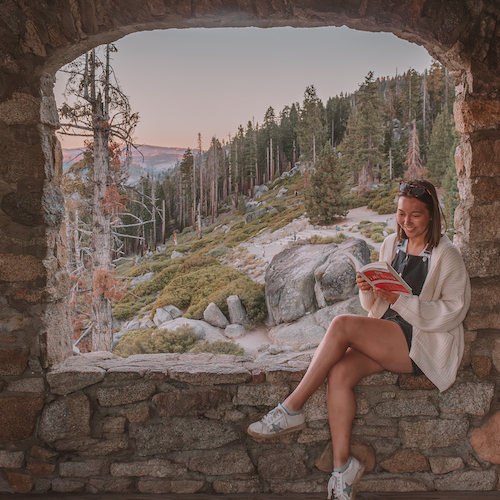
Editor of What’s Hot?
Saturday 10th of December 2022
Book report question: What made this book unique from other books you have read?
Thursday 25th of February 2021
This is so so useful.
Tuesday 23rd of February 2021
Very key points here. That first part, where I talk about the synopsis, the intended audience, the genre, that is my biggest struggle.

The 23 Best Books for 3rd Graders
The world of third grade is a fascinating one. It’s a phase where readers are blossoming, ready to delve deeper into literature’s treasures. Their appetites for compelling narratives are growing, and they’re on the brink of exploring more intricate plots and character dynamics. However, any educator, parent, or guardian knows the challenge: finding the right books for 3rd graders that hit the sweet spot between engaging and age-appropriate.
Have you ever found yourself overwhelmed, combing through the endless recommendations, trying to pinpoint the best chapter books for 3rd graders? The hunt can seem daunting. Choose a book too rudimentary, and they’re uninterested; select something overly intricate, which might overshadow their budding reading confidence.

But here’s the good news: your quest just became more navigable. After countless hours in library aisles, coupled with the invaluable feedback of young literature enthusiasts, I’ve created this curated guide. This list isn’t just a random assortment; it’s a carefully chosen collection of top-notch chapter books for 3rd graders, complemented by captivating graphic novels tailored for the vibrant and curious minds of 8- and 9-year-olds.
So, without further ado, let’s delve into this handpicked selection of books for 3rd graders. These tales are more than just stories; they’re gateways to worlds of wonder, challenges, and growth.
My Favorite Novels & Chapter Books for 3rd Graders
Whether you are a first-time teacher preparing your classroom library or trying to find a great book for your child, these 23 novels are amazing for your third-grade students. To help you determine which books best fit your class, I shared a short summary of the plot. I also shared links to the novel study to help save you prep time. I know your third graders will love these great stories!
Realistic Fiction for Third Graders
1. how to eat fried worms by thomas rockwell .
This popular book tells the story of a boy who refuses to lose a bet. How to Eat Fried Worms is a novel sure to capture the attention of those reluctant readers in your class, especially the boys. However, when he gets stuck trying to eat more than a dozen worms, he realizes there has to be a better way! This leads him to learn various cooking methods to make his task a little less disgusting…maybe.

As a teacher, I love that this story offers so many opportunities to discuss important reading comprehension skills, including cause and effect, problem and solution, and character change across time.
Learn more about the novel study: How to Eat Fried Worms Novel Study
2. The Best School Year Ever by Barbara Robinson
Looking for funny books for your learner to engage with? Look no further!
The Best School Year Ever is the second in the series about the Herdman family, a group that regularly finds trouble no matter where they go. The narrator is a classmate of one of the Herdman children and shares all the rumors and legends surrounding the family.
Throughout the school year, anything that goes wrong is blamed on one Herdman kid or another, but when the narrator is asked to write a compliment about each kid in class, it is discovered that maybe the Herdmans aren’t so bad after all.
A great book for discussing finding the good in others, this story has great humor and is such a fun read.
3. Ramona Quimby, Age 8 by Beverly Cleary
There is so much great realistic fiction for third graders. Ramona Quimby, Age 8 is the perfect example of a high-quality, engaging novel that allows students to connect with characters.
The story is focused around a girl named Ramona, who faces many of the same challenges with parents and peers your students might face. This book covers everything from bullying and the pressure to balancing the responsibilities of home life.
The story is great for making text-to-self connections and comparing characters. I highly recommend you add it to your 3rd grade reading list.
Novel Study & Lesson Materials: Ramona Quimby, Age 8 Novel Study
4. Third Grade Angels by Jerry Spinelli
Jerry Spinelli is an amazing author, and this book is perfect for your third-grade students. A prequel to the popular story Fourth Grade Rats , this is the story of George’s third-grade year. Nicknamed Suds, George is desperate to be the first to win his teacher’s coveted behavior award.
George struggles with what it means to have good behavior and whether he has to behave ALL the time to earn the award. George’s character and challenges are easily relatable to students.
A great fall read-aloud book for third grade, this story is also perfect for book clubs or as an independent reading opportunity later in the school year.
Novel Study & Lesson Materials: Third Grade Angels Novel Study
5. Fudge-a-mania by Judy Blume
After discovering his parents’ plan to have their family spend summer vacation with his enemy, Sheila, Peter Hatcher is sure summer is ruined. His little brother, however, is elated.
Things take a turn for the better for Peter when his parents offer to let him bring his best friend with him, but it isn’t long before he’s spending more time with Shiela than him.

While the storyline is pretty tame, much like life most of the time, the relatable characters and situations are perfect for 3rd-grade readers. The students love predicting what will happen after discovering Sheila and Peter have become “stepcousins” by the end of the story.
Another fabulous novel by Judy Blume is the third book in the Fudge series. While all the books in the series are great, I really love this one. It is a great way to introduce the topic of protagonist vs. antagonist and how this isn’t always the bad guy vs. the good guy.
Novel Study & Lesson Materials: Fudge-a-mania Novel Study
Fantasy Books for 3rd Graders
6. snot stew by bill wallace.
If you think this story will be about snot…guess again. Told from a cat’s first-person point of view, this story is a unique and engaging view of the world from a non-human perspective.
Snot Stew is the tale of two stray kittens adopted into a family and how they acclimate to this new environment without their momma. As they become accustomed to their new home, their relationship changes dramatically until an emergency brings them back together.

Great for inferring, students love using text clues to figure out what common household objects the feline narrator describes. The story is also a great introduction to point of view and how it impacts the reader’s understanding of the text.
Novel Study & Lesson Materials: Snot Stew Novel Study
7. My Father’s Dragon by Ruth Styles Gannett
My Father’s Dragon is a fantasy novel about a young boy who runs away to rescue a baby dragon. With vibrant details and some crazy adventures, this book captures the imagination of young readers and takes them along on Elmer’s journey.
Danger, excitement, and heroic efforts are all important components of this story, which is presented as a story told to the narrator by his father many years ago. Using only everyday objects from his pack, Elmer single-handedly disarms the many dangerous animals of Wild Island on his quest.

The book has beautiful illustrations, which help readers visualize the events of the story, and your students will love reading about Elmer’s brilliant ways of outsmarting the animals throughout. Perfect for teaching character traits and sequencing, this story is a gem that will stick with your readers for years.
Novel Study & Lesson Materials: My Father’s Dragon Novel Study
8. The Littles by John Peterson
Imagine tiny people were living in your house without you even knowing it. They used your things, borrowed your scraps, and made themselves right at home despite the numerous dangers the typical house presents when you’re tiny. That is the plot of The Littles .
This fantasy novel is great for young readers because it is engaging and has a clear, well-developed plot. There are many opportunities to discuss problems and solutions as the Littles work to navigate the world at their size. Plus, it is a great novel for working through other critical comprehension skills.

Considered by many to be a must-read classic, I’ve included it on my list because it is the first of a whole series of books about this miniature family.
9. Flora & Ulysses by Kate DiCamillo
My list wouldn’t be complete without a graphic novel, and Flora & Ulysses is the perfect graphic novel for your third graders.
Written by award-winning author Kate DiCamillo, this is the story of the many zany adventures of a superhero squirrel and the girl who saved him.

Students love this silly adventure story, and it is a great introduction to Kate DiCamillo if students haven’t read her work previously.
While ideal for reluctant readers due to the many detailed illustrations, even your advanced readers will enjoy this light, fun-to-read book.
Novel Study & Lesson Materials: Flora & Ulysses Novel Study
10. The Chocolate Touch by Patrick Skene Catling
Imagine everything you touched turned to chocolate…
Sounds pretty awesome, right? That’s what John Midas thought, too, until things started to go horribly wrong.
This delightful fantasy novel is a twist on the traditional story of the Midas touch. Even reluctant readers can’t help but be pulled into the story as they connect with John and his transition from enjoyment to frustration with his newfound talent.
A great book for cause and effect and prediction, The Chocolate Touch is a well-loved novel for a reason. I guarantee your kids will beg to get back to reading when you use this book in your novel study or book club.
Novel Study & Lesson Materials: The Chocolate Touch Novel Study
11. Sideways Stories from Wayside School by Louis Sachar
If your students are looking for a funny book to read, consider Louis Sachar’s Sideways Stories from Wayside School.
The book is a collection of short stories that all take place in the same wacky school where things never seem to go right. From a teacher who turns students into apples to a boy who gets sent home early for saving the day and being a good friend, your students will be laughing at the silly situations the characters find themselves in.
Each story can be read as a stand-alone or part of the larger collection. This book is perfect for a classroom read-aloud or for independent reading. This was always the first story I read to my own class.
Novel Study & Lesson Materials: Sideways Stories from Wayside School Novel Study
12. Magic Tree House: Dinosaurs Before Dark by Mary Pope Osborne
The Magic Tree House series is one of my favorites. It has so many great books for 3rd graders to enjoy and learn from. We actually use it for a bedtime read-aloud with my 6-year old. However, it is a great series for third-grade independent readers, too.
The stories revolve around a sister and brother, Jack and Annie, and their travels in a magic tree house. In this first book, they travel back to the time of the dinosaurs on a mysterious quest. In addition to the great story, readers also learn lots of facts about dinosaurs through Jack’s research during their travels.
Great for teaching facts and opinions and other great reading skills, this book is a gateway to a series of great reading for your students.
Novel Study & Lesson Materials: Dinosaurs Before Dark Novel Study
13. The Indian in the Cupboard by Lynne Reid Banks
What kid hasn’t dreamed about their toys coming to life? The fact that this fantasy is so relatable is part of what makes this one of the great books for 3rd graders!

When Omri receives a cupboard for his birthday, he decides it is the perfect place to lock his plastic Indian toy. The next thing he knows, his plastic toy is a walking, talking man. After discovering his name is Little Bear, Omri works to help him set up a place to live and food.
Of course, no story is complete without a little drama…and Omri’s comes in the form of a cowboy named Boone. While the two don’t get along initially, the men soon find commonalities.
Ultimately, Omri is surprised when the magic cupboard’s key disappears. Will the cowboy and Indian ever be able to go back home?
This is one of my favorite books for 3rd graders when teaching comparing and contrasting or visualizing.
Novel Study & Lesson Materials: Indian in the Cupboard Novel Study
14. Stuart Little by E.B. White
Many students have seen the movies that accompany this series, making the book the perfect transition to help students who struggle with comprehension.
Stuart is a mouse born into a human family. (Don’t ask me how that happened…) His family lives in New York City, and the story chronicles his adventures around Manhattan and all the dangers of being small in a big, big world.
Their familiarity with the plotline makes digging deep into important reading strategies easier, and comparing the book and movie helps students build real-world connections.
Vocabulary and context clues are also a great focus for this fabulous classic.
Novel Study & Lesson Materials: Stuart Little Novel Study
Historical Fiction Books for Third Graders
15. stone fox by john reynolds gardiner.
I would be remiss if I didn’t start with a little disclaimer for this one. Keep tissues close by near the end. You will cry…probably hard. It is truly one of the saddest third-grade books on this list. However, this classic book remains one of my favorite novels for third graders.
Stone Fox is a beautifully written story that enthralls readers in Little Willy’s attempts to save his grandfather’s farm along with some help from his faithful pup, Searchlight. Little Willy is such a likable character, and your students will cheer him on as he attempts the impossible.
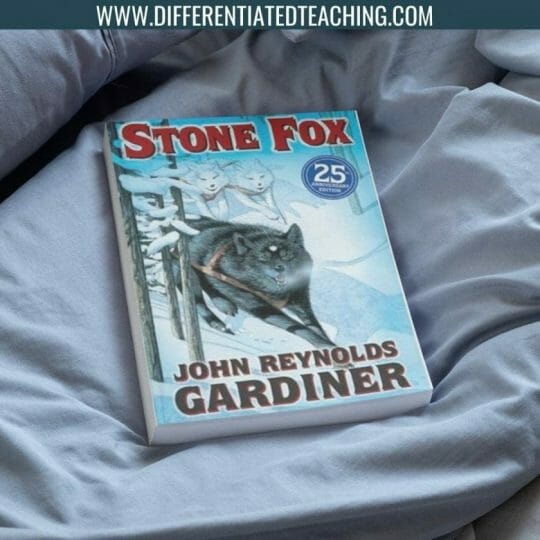
This novel is a literary gem, making a fantastic winter book study or read-aloud. I can read it repeatedly with students and (despite knowing the end) still be brought to tears each time by Gardiner’s compelling story.
This book is perfect for inclusion in a cross-curricular unit about the Iditarod in March lesson plans , you can make many great connections to math and social studies. Alternatively, you might use this book in conjunction with the true story of Balto.
Learn more about some engaging STEM challenges you can pair with this novel.
16. Boxcar Children by Gertrude Chandler Warner
This book was a favorite of mine as a child, and now I love sharing it with my students. This classic story of orphans on the run will capture the reader’s attention.
Students will love reading about the adventures of Henry, Jessie, Violet, and Benny as they create a home for themselves in an old boxcar they discover in the woods. Trying hard to avoid being discovered by their grandfather (whom they’ve not met), the kids cook, clean, and work to earn money all on their own.

The book has a surprise ending, and as the first book in the series, it is a great opportunity to get your struggling or reluctant readers hooked on an easy-to-read series that will expose them to lots of great vocabulary. This book is truly a must-have in every third-grade classroom library.
Novel Study & Lesson Materials: The Boxcar Children Novel Study
17. Little House in the Big Woods by Laura Ingalls Wilder
This story was written by Laura Ingalls Wilder and is the semi-true adventure of her family’s move to Wisconsin when she was a young girl. Throughout the story, Laura describes her work to help her Ma and Pa and how the family always finds time to play together.
From butchering their meat to gathering wood for the fire, the Ingalls must do everything they need to survive. As the book works through each season, the family’s work changes. Planting, making butter, and more.
Students are often fascinated by life long before there were grocery stores everywhere. Great for comparing the past and present, a commonly studied social studies unit, this story details life during the 1800s. This is the first of four books in the Little House series.
Novel Study & Lesson Materials: Little House in the Big Woods Novel Study
More books for 3rd graders
18. geronimo stilton #1: lost treasure of the emerald eye.
Unlike many other books on this list, the Geronimo Stilton series is a bit less text-heavy. However, don’t let that deter you from giving them a try! These books are packed with adventure, humor, and interesting facts.
In the first book, Lost Treasure of the Emerald Eye, readers follow Geronimo as he tries to solve the mystery of a missing treasure. Full of twists and turns, this book is perfect for reluctant readers or those looking for a fast-paced read with lots of visuals.
This series is full of adventure stories, so if your students enjoy this book, be sure to check out the rest of the chapter book series!
19. Freckle Juice by Judy Blume
This is the first of a couple of Judy Blume books you’ll find on this list. She’s got some great choices that are perfect for third-grade readers.

Freckle Juice is a hilarious realistic fiction novel about a boy, Andrew, who wants to have freckles like his classmate. Andrew can think of many reasons why having freckles would make his life easier. For example, his mom would never even know if his neck was dirty! When Andrew asks Nicky where his freckles came from, a classmate overhears and offers a special freckle juice recipe…at just 50 cents.
Of course, Andrew buys it and makes a batch of freckle juice for himself. I won’t give away the whole story, but suffice it to say, things get extra hilarious from then on.
Your students will love this totally relatable novel, and you’ll love the numerous opportunities to teach skills like theme and problem & solution. This makes it one of the great books for 3rd graders to enjoy during book clubs or lit circles.
20. Mrs. Piggle-Wiggle by Betty MacDonald
The book is a collection of short stories about the title character, an eccentric woman who knows how to deal with children’s bad habits. From kids who won’t take baths to those who are always losing their temper, Mrs. Piggle Wiggle has a cure for everything.
Your students will love hearing about the wild antics that take place in each story, and you can use the book as a springboard for discussing character traits, problem-solving, and more.
If you’re looking for a feel-good read, Mrs. Piggle Wiggle is a good choice!
21. Bunnicula by Deborah & James Howe
Told from the perspective of the family dog, Harold, Bunnicula is the story of what happened after the family found a baby rabbit at the movie theater during a screening of Dracula.
When Chester (the family’s cat) notices something strange about the new addition, he decides the rabbit must be a vampire and tries to alert the Monroe family.
Another really funny book, this novel is great for Halloween or any time. The narrator’s engaging storyline and unique perspective make it a perfect book for students who are into vampires and other supernatural happenings.
The text offers a number of great opportunities to infer and draw conclusions, which is a challenging skill for many 3rd graders.
Learn more about this and other great spooky stories here.
22. Esio Trot by Roald Dahl
A love story with a twist, this is the story of Mr. Hoppy and his plans to win the adoration of Ms. Silver via her beloved tortoise (Alfie). After telling Mr. Hoppy she wished she knew how to help Alfie grow larger, he concocts a wacky plan to win her over. Your students will love discussing this hare-brained plot and predicting whether it will work. (Spoiler: It does!)
With vivid description and silliness that only Dahl can bring to a children’s novel, this story is overall an easy read and fan favorite among books for 3rd graders. There are many great opportunities to discuss character traits and practice visualization, inferring, and more.
While the text has some made-up words (as do nearly all Dahl’s books), the plotline draws readers in and encourages them to overcome these challenges because the story is just that good.
Novel Study & Lesson Materials: Esio Trot Novel Study
23. The Wild Robot by Peter Brown
Your animal-loving students with The Wild Robot!
After a shipwreck, Roz the robot washes ashore on an uninhabited island. At first, she is only concerned with her survival, but as time passes, she starts to feel lonely. When a family of creatures finds her, Roz begins to learn about companionship with your animal-loving students with The Wild Robot!
A former Global Read Aloud book, The Wild Robot is a good book to discuss character traits, emotions, and more with your third-grade class.
Don’t forget to check out the corresponding lesson plans and materials for the book!
Novel Study & Lesson Materials: The Wild Robot Novel Study
Find the perfect novel for your third graders to enjoy!
While it can be challenging to find quality novels with engaging plots that support deep conversation and critical thinking about text that will appeal to a broad range of readers, my hope is that this list will help guide you in the right direction. All twenty books on this comprehensive list are quality literature that your 3rd graders will love, whether you decide to use them as a read-aloud or incorporate them as you plan your next novel unit.
I hope this list has sparked some ideas for adding books to your classroom library and your next novel unit. While you’re here, grab my free novel study planning roadmap to get step-by-step support to plan a high-quality literature unit for your third-grade students, whether you’re in the classroom or homeschooling.
Check out my Book Lists for Other Grades Below
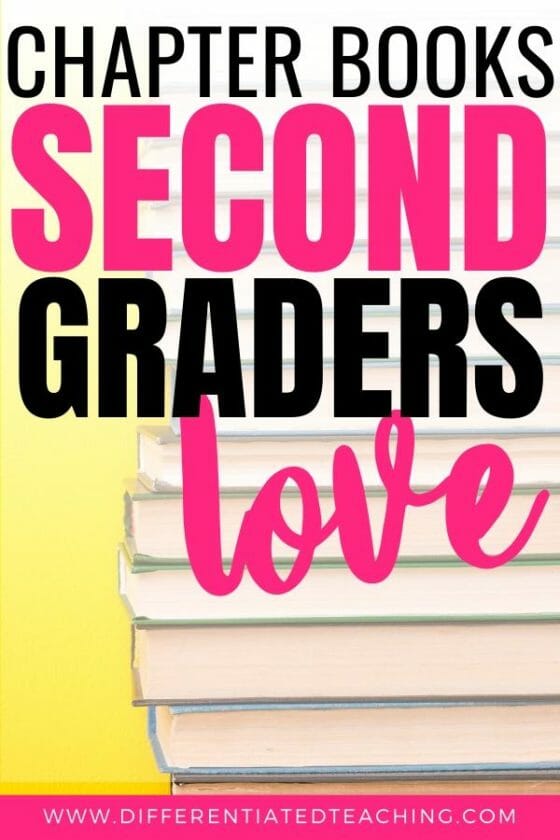
Leave a comment Cancel reply
You must be logged in to post a comment.

Book Review Writing
Introduction.
If you love to read, at some point you will want to share a book you love with others. You may already do this by talking about books with friends. If you want to share your ideas with more people than your circle of friends, the way you do that is by writing a review. By publishing the reviews you write, you can share your ideas about books with other readers around the world.
It's natural for young readers to confuse book reviews with book reports, yet writing a book review is a very different process from writing a book report. Book reports focus on the plot of the book. Frequently, the purpose of book reports is to demonstrate that the books were read, and they are often done for an assignment.
A book review is a totally different task. A book review's purpose is to help people decide whether or not the book would interest them enough to read it. Reviews are a sneak peek at a book, not a summary. Like wonderful smells wafting from a kitchen, book reviews lure readers to want to taste the book themselves.
This guide is designed to help you become a strong book reviewer, a reader who can read a book and then cook up a review designed to whet the reading appetites of other book lovers.
Form: What should the review look like?
How long should it be.
The first question we usually ask when writing something is "How long should it be?" The best answer is "As long as it takes," but that's a frustrating answer. A general guideline is that the longer the book, the longer the review, and a review shouldn't be fewer than 100 words or so. For a long book, the review may be 500 words or even more.
If a review is too short, the review may not be able to fulfill its purpose. Too long, and the review may stray into too much plot summary or lose the reader's interest.
The best guide is to focus less on how long to write and more on fulfilling the purpose of the review.
How Do You Create A Title?
The title of the review should convey your overall impression and not be overly general. Strong titles include these examples:
- "Full of action and complex characters"
- "A nail-biter that will keep you up all night"
- "Beautiful illustrations with a story to match"
- "Perfect for animal lovers"
Weak titles may look like this:
- "Really good book"
- "Three stars"
- "Pretty good"
- "Quick read"
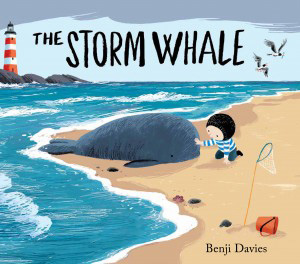
How Should It Begin?
Although many reviews begin with a short summary of the book (This book is about…), there are other options as well, so feel free to vary the way you begin your reviews.
In an introductory summary, be careful not to tell too much. If you retell the entire story, the reader won't feel the need to read it him/herself, and no one appreciates a spoiler (telling the end). Here are some examples of summaries reviewers from The New York Times have written:
"A new picture book tells a magically simple tale of a lonely boy, a stranded whale and a dad who rises to the occasion."
"In this middle-grade novel, a girl finds a way forward after the loss of her mother."
"Reared by ghosts, werewolves and other residents of the hillside cemetery he calls home, an orphan named Nobody Owens wonders how he will manage to survive among the living having learned all his lessons from the dead. And the man Jack — who killed the rest of Nobody's family — is itching to finish the job."
"In vivid poems that reflect the joy of finding her voice through writing stories, an award-winning author shares what it was like to grow up in the 1960s and 1970s in both the North and the South." Other ways to begin a review include:
- Quote: A striking quote from the book ("It was a bright cold day in April, and the clocks were striking thirteen.") can make for a powerful beginning. This quote begins George Orwell's novel 1984 .
- Background: What makes this book important or interesting? Is the author famous? Is it a series? This is This is how Amazon introduces Divergent : "This first book in Veronica Roth's #1 New York Times bestselling Divergent trilogy is the novel the inspired the major motion picture."
- Interesting Fact: For nonfiction books in particular, an interesting fact from the book may create a powerful opening for a review. In this review of The Middle East by Philip Steele, Zander H. of Mid-America Mensa asks, "Did you know that the Saudi Arabia's Rub' al-Khali desert reaches temperatures of 140 degrees Fahrenheit in the day and plummets to the freezing point at night?"
- Explanation of a term: If a word or phrase in the book or title is confusing or vitally important to understand, you may wish to begin the review explaining that term.
Process: What should I write about?
Deciding what to say about the book can be challenging. Use the following ideas as a guide, but remember that you should not put all of this into a single review — that would make for a very long review! Choose the things that fit this particular book best.
General Information What the reader ought to know
- What kind of book is it? (Picture book? Historical fiction? Nonfiction? Fantasy? Adventure?)
- Does the book belong to a series?
- How long is the book? Is it an easy or a challenging read?
- Is there anything that would be helpful for the reader to know about the author? For instance, is the author an expert in the field, the author of other popular books, or a first-time author?
- How does the book compare to other books on the same topic or in the same genre?
- Is the book written in a formal or informal style? Is the language remarkable in any way?
- What ages is the book geared to?
- Is the book written in normal prose? If it is written in poetic form, does it rhyme?
Plot What happens?
Writing about the plot is the trickiest part of a review because you want to give the reader a feel for what the book is about without spoiling the book for future readers. The most important thing to remember is that you must never give away the ending. No one likes a spoiler.
One possibility for doing this is to set up the premise (A brother and a sister find themselves lost in the woods at the mercy of an evil witch. Will they be able to outsmart her and escape?). Another possibility is to set up the major conflict in the book and leave it unresolved (Sometimes the waiting is the hardest part or He didn't know what he stood to lose or Finding your purpose in life can be as easy as finding a true friend.)
Try to avoid using the tired phrase "This book is about…" Instead, just jump right in (The stuffed rabbit wanted more than anything to live in the big old house with the wild oak trees.)
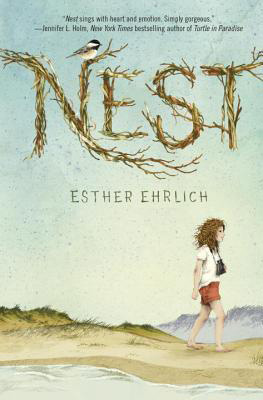
Characters Who lives in the book?
Reviews should answer questions about the characters in fiction books or non-fiction books about people. Some possible questions to answer include:
- Who are the main characters? Include the protagonist and antagonist.
- What makes them interesting?
- Do they act like real people act or are they too good or too evil to be believable?
- Are they human?
- What conflicts do they face?
- Are they likeable or understandable?
- How do they connect with each other?
- Do they appear in other books?
- Could you relate to any of the characters in the story?
- What problems did the main characters face?
- Who was your favorite character, and why?
- We learn about characters from things they do and say, as well as things other characters say about them. You may wish to include examples of these things.
Theme What is the book about at its heart?
What is the book really about? This isn't the plot, but rather the ideas behind the story. Is it about the triumph of good over evil or friendship or love or hope? Some common themes include: change, desire to escape, facing a challenge, heroism, the quest for power, and human weaknesses.
Sometimes a book will have a moral — a lesson to learn. If so, the theme is usually connected to that moral. As you write about the theme, try to identify what makes the book worth reading. What will the reader think about long after the book is finished? Ask yourself if there any particular lines in the book that strike you as meaningful.
Setting Where are we?
The setting is the time and place the story occurs. When you write about the setting in a review, include more than just the location. Some things to consider:
- Is the book set in the past, present or future?
- Is it set in the world we know or is it a fantastical world?
- Is it mostly realistic with elements of fantasy (animals that can talk, for example)?
- Is the setting unclear and fuzzy, or can you easily make the movie in your mind?
- How much does the author draw you into the setting and how does s/he accomplish that?
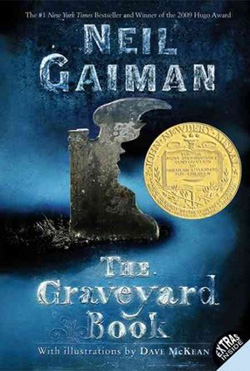
Opinion & Analysis What do you really think?
This is where the reviewer shares his/her reactions to the book that go beyond the essential points described above. You may spend half of the review on this section. Some possible questions to address include:
- Why do you think other readers would enjoy it? Why did you enjoy it (if you did) or why didn't you (if you didn't).
- What ages or types of readers do you think would like the book?
- How does it compare with other books that are in the same genre or by the same author?
- Does the book engage your emotions? If a book made you laugh or cry or think about it for days, be sure to include that.
- What do you like or dislike about the author's writing style? Is it funny? Is it hard to follow? Is it engaging and conversational in tone?
- How well do you think the author achieved what s/he was going for in the writing of the book? Do you think you felt what the author was hoping you would feel?
- Did the book feel complete, or did it feel as though key elements were left out?
- How does the book compare to other books like it you've read?
Are there parts that are simply not believable, even allowing for the reader's understanding that it is fiction or even fantasy?
- Are there mistakes?
- Would you describe the book as for entertainment, self-improvement, or information?
- What was your favorite part of the book?
- Would you have done anything differently had you been the author?
- Would any reader enjoy this book? If not, to what ages or type of reader would it appeal?
Special situations: Nonfiction and young reviewers
Some of the tips and ideas above work best for fiction, and some of it is a little too complicated for very young reviewers.
Nonfiction What to do if it's real
When reviewing a book of nonfiction, you will want to consider these questions:
- What was the author's purpose in writing the book? Did the author accomplish that purpose?
- Who is the target audience for the book?
- What do you think is the book's greatest value? What makes it special or worthwhile?
- Are the facts shared accurate?
- Is the book interesting and hold your attention?
- Would it be a useful addition to a school or public library?
- If the book is a biography or autobiography, how sympathetic is the subject?
- Is it easy to understand the ideas?
- Are there extra features that add to the enjoyment of the book, such as maps, indexes, glossaries, or other materials?
- Are the illustrations helpful?
Young Reviewers Keeping it simple
Reviewing a book can be fun, and it's not hard at all. Just ask yourself these questions:
- What is the book about? You don't need to tell the whole story over — just give an idea of what it's about.
- Do you think other people would like it?
- Did you think it was funny or sad?
- Did you learn something from the book?
- l Did you think it was interesting?
- Would you want to read it again?
- Would you want to read other books by the same author or about the same subject?
- What was your favorite part?
- Did you like the pictures?
Remember! Don't give away the ending. Let's keep that a surprise.
General Tips & Ideas
Use a few quotes or phrases (keep them short) from the book to illustrate the points you make about the book. If there are illustrations, be sure to comment on those. Are they well done? Has the illustrator done other well-known books?
Make sure you include a conclusion to the review — don't leave it hanging. The conclusion can be just one sentence (Overall, this book is a terrific choice for those who…).
You can use the transition word handout at the end of the Writer's Toolbox to find ideas for words to connect the ideas in your review. If you would like to read some well-written reviews, look for reviews of books for young people at The New York Times or National Public Radio .
Rating Books How to award stars?
Most places you post reviews ask you to rate the book using a star system, typically in a range of from one to five stars. In your rating, you should consider how the book compares to other books like it. Don't compare a long novel to a short poetry book — that's not a valid comparison.
It's important to remember that it's not asking you to only give five stars to the very best books ever written.
- 5 Stars: I'm glad I read it or I loved it (this doesn't mean it was your favorite book ever).
- 4 Stars: I like it. It's worth reading.
- 3 Stars: It wasn't very good.
- 2 Stars: I don't like it at all.
- 1 Star: I hate it.

How to Write a Book Review: The Ultimate Guide
WHAT IS A BOOK REVIEW?

Traditionally, book reviews are evaluations of a recently published book in any genre. Usually, around the 500 to 700-word mark, they briefly describe a text’s main elements while appraising the work’s strengths and weaknesses. Published book reviews can appear in newspapers, magazines, and academic journals. They provide the reader with an overview of the book itself and indicate whether or not the reviewer would recommend the book to the reader.
WHAT IS THE PURPOSE OF A BOOK REVIEW?
There was a time when book reviews were a regular appearance in every quality newspaper and many periodicals. They were essential elements in whether or not a book would sell well. A review from a heavyweight critic could often be the deciding factor in whether a book became a bestseller or a damp squib. In the last few decades, however, the book review’s influence has waned considerably, with many potential book buyers preferring to consult customer reviews on Amazon, or sites like Goodreads, before buying. As a result, book review’s appearance in newspapers, journals, and digital media has become less frequent.
WHY BOTHER TEACHING STUDENTS TO WRITE BOOK REVIEWS AT ALL?
Even in the heyday of the book review’s influence, few students who learned the craft of writing a book review became literary critics! The real value of crafting a well-written book review for a student does not lie in their ability to impact book sales. Understanding how to produce a well-written book review helps students to:
● Engage critically with a text
● Critically evaluate a text
● Respond personally to a range of different writing genres
● Improve their own reading, writing, and thinking skills.
Not to Be Confused with a Book Report!
WHAT’S THE DIFFERENCE BETWEEN A BOOK REVIEW AND A BOOK REPORT?

While the terms are often used interchangeably, there are clear differences in both the purpose and the format of the two genres. Generally speaking, book reports aim to give a more detailed outline of what occurs in a book. A book report on a work of fiction will tend to give a comprehensive account of the characters, major plot lines, and themes in the book. Book reports are usually written around the K-12 age range, while book reviews tend not to be undertaken by those at the younger end of this age range due to the need for the higher-level critical skills required in writing them. At their highest expression, book reviews are written at the college level and by professional critics.
Learn how to write a book review step by step with our complete guide for students and teachers by familiarizing yourself with the structure and features.
BOOK REVIEW STRUCTURE
ANALYZE Evaluate the book with a critical mind.
THOROUGHNESS The whole is greater than the sum of all its parts. Review the book as a WHOLE.
COMPARE Where appropriate compare to similar texts and genres.
THUMBS UP OR DOWN? You are going to have to inevitably recommend or reject this book to potential readers.
BE CONSISTENT Take a stance and stick with it throughout your review.
FEATURES OF A BOOK REVIEW
PAST TENSE You are writing about a book you have already read.
EMOTIVE LANGUAGE Whatever your stance or opinion be passionate about it. Your audience will thank you for it.
VOICE Both active and passive voice are used in recounts.
A COMPLETE UNIT ON REVIEW AND ANALYSIS OF TEXTS

⭐ Make MOVIES A MEANINGFUL PART OF YOUR CURRICULUM with this engaging collection of tasks and tools your students will love. ⭐ All the hard work is done for you with NO PREPARATION REQUIRED.
This collection of 21 INDEPENDENT TASKS and GRAPHIC ORGANIZERS takes students beyond the hype, special effects and trailers to look at visual literacy from several perspectives offering DEEP LEARNING OPPORTUNITIES by watching a SERIES, DOCUMENTARY, FILM, and even VIDEO GAMES.
ELEMENTS OF A BOOK REVIEW
As with any of the writing genres we teach our students, a book review can be helpfully explained in terms of criteria. While there is much to the ‘art’ of writing, there is also, thankfully, a lot of the nuts and bolts that can be listed too. Have students consider the following elements before writing:
● Title: Often, the title of the book review will correspond to the title of the text itself, but there may also be some examination of the title’s relevance. How does it fit into the purpose of the work as a whole? Does it convey a message or reveal larger themes explored within the work?
● Author: Within the book review, there may be some discussion of who the author is and what they have written before, especially if it relates to the current work being reviewed. There may be some mention of the author’s style and what they are best known for. If the author has received any awards or prizes, this may also be mentioned within the body of the review.
● Genre: A book review will identify the genre that the book belongs to, whether fiction or nonfiction, poetry, romance, science-fiction, history etc. The genre will likely tie in, too with who the intended audience for the book is and what the overall purpose of the work is.
● Book Jacket / Cover: Often, a book’s cover will contain artwork that is worthy of comment. It may contain interesting details related to the text that contribute to, or detract from, the work as a whole.
● Structure: The book’s structure will often be heavily informed by its genre. Have students examine how the book is organized before writing their review. Does it contain a preface from a guest editor, for example? Is it written in sections or chapters? Does it have a table of contents, index, glossary etc.? While all these details may not make it into the review itself, looking at how the book is structured may reveal some interesting aspects.
● Publisher and Price: A book review will usually contain details of who publishes the book and its cost. A review will often provide details of where the book is available too.

BOOK REVIEW KEY ELEMENTS
As students read and engage with the work they will review, they will develop a sense of the shape their review will take. This will begin with the summary. Encourage students to take notes during the reading of the work that will help them in writing the summary that will form an essential part of their review. Aspects of the book they may wish to take notes on in a work of fiction may include:
● Characters: Who are the main characters? What are their motivations? Are they convincingly drawn? Or are they empathetic characters?
● Themes: What are the main themes of the work? Are there recurring motifs in the work? Is the exploration of the themes deep or surface only?
● Style: What are the key aspects of the writer’s style? How does it fit into the wider literary world?
● Plot: What is the story’s main catalyst? What happens in the rising action? What are the story’s subplots?
A book review will generally begin with a short summary of the work itself. However, it is important not to give too much away, remind students – no spoilers, please! For nonfiction works, this may be a summary of the main arguments of the work, again, without giving too much detail away. In a work of fiction, a book review will often summarise up to the rising action of the piece without going beyond to reveal too much!

The summary should also provide some orientation for the reader. Given the nature of the purpose of a review, it is important that students’ consider their intended audience in the writing of their review. Readers will most likely not have read the book in question and will require some orientation. This is often achieved through introductions to the main characters, themes, primary arguments etc. This will help the reader to gauge whether or not the book is of interest to them.
Once your student has summarized the work, it is time to ‘review’ in earnest. At this point, the student should begin to detail their own opinion of the book. To do this well they should:
i. Make It Personal
Often when teaching essay writing we will talk to our students about the importance of climbing up and down the ladder of abstraction. Just as it is helpful to explore large, more abstract concepts in an essay by bringing it down to Earth, in a book review, it is important that students can relate the characters, themes, ideas etc to their own lives.
Book reviews are meant to be subjective. They are opinion pieces, and opinions grow out of our experiences of life. Encourage students to link the work they are writing about to their own personal life within the body of the review. By making this personal connection to the work, students contextualize their opinions for the readers and help them to understand whether the book will be of interest to them or not in the process.
ii. Make It Universal
Just as it is important to climb down the ladder of abstraction to show how the work relates to individual life, it is important to climb upwards on the ladder too. Students should endeavor to show how the ideas explored in the book relate to the wider world. The may be in the form of the universality of the underlying themes in a work of fiction or, for example, the international implications for arguments expressed in a work of nonfiction.
iii. Support Opinions with Evidence
A book review is a subjective piece of writing by its very nature. However, just because it is subjective does not mean that opinions do not need to be justified. Make sure students understand how to back up their opinions with various forms of evidence, for example, quotations, statistics, and the use of primary and secondary sources.
EDIT AND REVISE YOUR BOOK REVIEW

As with any writing genre, encourage students to polish things up with review and revision at the end. Encourage them to proofread and check for accurate spelling throughout, with particular attention to the author’s name, character names, publisher etc.
It is good practice too for students to double-check their use of evidence. Are statements supported? Are the statistics used correctly? Are the quotations from the text accurate? Mistakes such as these uncorrected can do great damage to the value of a book review as they can undermine the reader’s confidence in the writer’s judgement.
The discipline of writing book reviews offers students opportunities to develop their writing skills and exercise their critical faculties. Book reviews can be valuable standalone activities or serve as a part of a series of activities engaging with a central text. They can also serve as an effective springboard into later discussion work based on the ideas and issues explored in a particular book. Though the book review does not hold the sway it once did in the mind’s of the reading public, it still serves as an effective teaching tool in our classrooms today.

Teaching Resources
Use our resources and tools to improve your student’s writing skills through proven teaching strategies.
BOOK REVIEW GRAPHIC ORGANIZER (TEMPLATE)

101 DIGITAL & PRINT GRAPHIC ORGANIZERS FOR ALL CURRICULUM AREAS

Introduce your students to 21st-century learning with this GROWING BUNDLE OF 101 EDITABLE & PRINTABLE GRAPHIC ORGANIZERS. ✌ NO PREP REQUIRED!!! ✌ Go paperless, and let your students express their knowledge and creativity through the power of technology and collaboration inside and outside the classroom with ease.
Whilst you don’t have to have a 1:1 or BYOD classroom to benefit from this bundle, it has been purpose-built to deliver through platforms such as ✔ GOOGLE CLASSROOM, ✔ OFFICE 365, ✔ or any CLOUD-BASED LEARNING PLATFORM.
Book and Movie review writing examples (Student Writing Samples)
Below are a collection of student writing samples of book reviews. Click on the image to enlarge and explore them in greater detail. Please take a moment to both read the movie or book review in detail but also the teacher and student guides which highlight some of the key elements of writing a text review
Please understand these student writing samples are not intended to be perfect examples for each age or grade level but a piece of writing for students and teachers to explore together to critically analyze to improve student writing skills and deepen their understanding of book review writing.
We would recommend reading the example either a year above and below, as well as the grade you are currently working with to gain a broader appreciation of this text type .

BOOK REVIEW VIDEO TUTORIALS

OTHER GREAT ARTICLES RELATED TO BOOK REVIEWS

Transactional Writing

How to write a text response

How to Write a Compare and Contrast Essay

How to Write Excellent Expository Essays

Book Review Template for Kids (Tips & Activities)
- July 21, 2019
- Kids Printables
Aren’t your kids interested in reading more books? How can you enhance their understanding skills after reading a book?
Here is a solution ! How about asking them to write a review? Don’t be funny you say ! No, I am just saying if you have colorful “ Book Review Templates” for kids , you can actually ask them to write what they understood.
Ask your kids to share their point of view and discuss about it with their friends and family. While this is a small circle, writing a review about the book will help them introduce it a bigger circle or people, at the same time improve their thinking and writing skills.
You might want to check out book templates for kids , who are interested in compiling or writing a book.
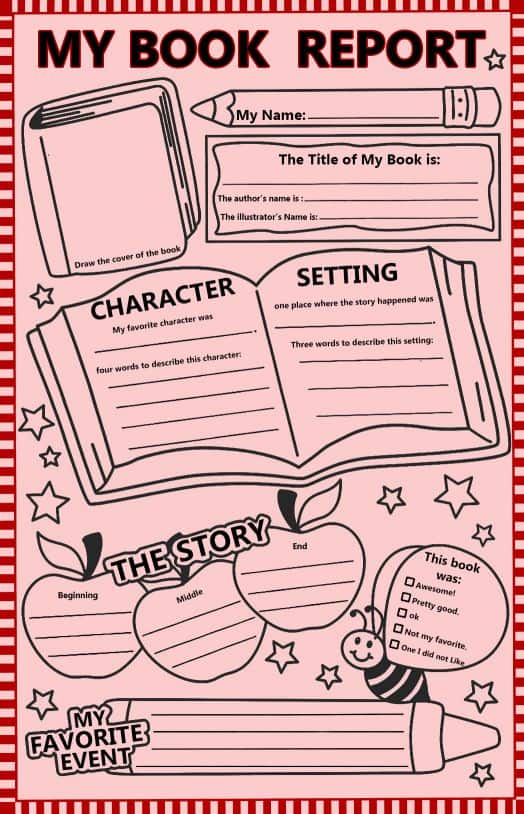
Your kids read books? Do they have the habit of sharing their view about the books? Do they share their review about every book they read? Or do you want your kid to write review about the books they read? Do you want to teach them on how to write a book review? Well, this topic is help and satisfy all the above needs.
Yes, In this article we are going to see in detail about what is book review and how to make your kids write a book review. We are here to help you with the wonderful set of templates that will help teach your kids and encourage them write review about books. All you have to do is just a click away, select the template you like from here, download it, print and teach your kids on how to write a book review with the help of it. All these templates are available for free and you can download and use it anytime, anywhere.
What are Book Review Templates?
First of all let us see what is book review template and what are the components in it to be filled. As the name says, it is nothing but the template to write review about books, which will help you teach your kids on how to write a book review and what all needs to be included/excluded while writing a book review. Below are some of the components that needs to be filled in order to complete a Book review.
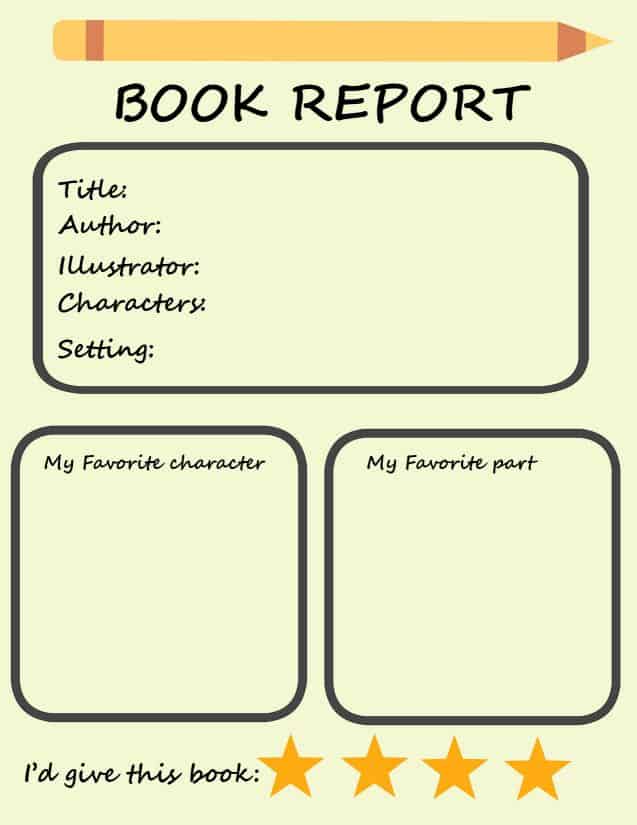
- Title – Name of the book
- Author/Illustrator – Name of the Author and/or Illustrator of the book
- Word difficulty – They need to predict the difficulty level they had while reading the book. For Example, Too easy, Just right, Medium, Too hard,
- Did your like the book/Rating – This is to rate the book. As it is for kids, it can be represented with the STAR rating. If not, by numbers. For example, 4.2 out of 5. Or you can ask them to describe the book in one word by proving them a set of words to choose. For example, Exiting, boring, impressive, stupid, funny, sad, heart warming, interesting, excellent, entertaining, educational and so on.
- Summary in one sentence – Ask them to summarize the story of the book in a sentence, that needs to be short and crisp.
- Characters – Describe in brief about the character involved in the book.
- What was your favorite part of the book? / What I liked best – This will help them recollect the memories of reading the book and describe their favorite part in the book.
- What I didn’t like – Ask them to summarize the part of book which the kids did not like
- Draw your favorite character from the book – If it is a picture book or activity book that would contain more pictures and images, then you can guide them to draw their favorite character from the book.
- Draw your favorite scene from the book – every kids will have a favorite part from the book and you can encourage them to visualize their favorite scene, which in-turn will develop their drawing skills also.
- Recommendation – They can tick mark the box. For example, Highly Recommended, Reasonable, Not recommended.
- Reviewer Name – Your kids name who is writing the review.
- Date – date on which the review was written.
These are few of the points that must be covered as part of a book review. Apart from this the kids can add anything extra as part of the template while writing the review.
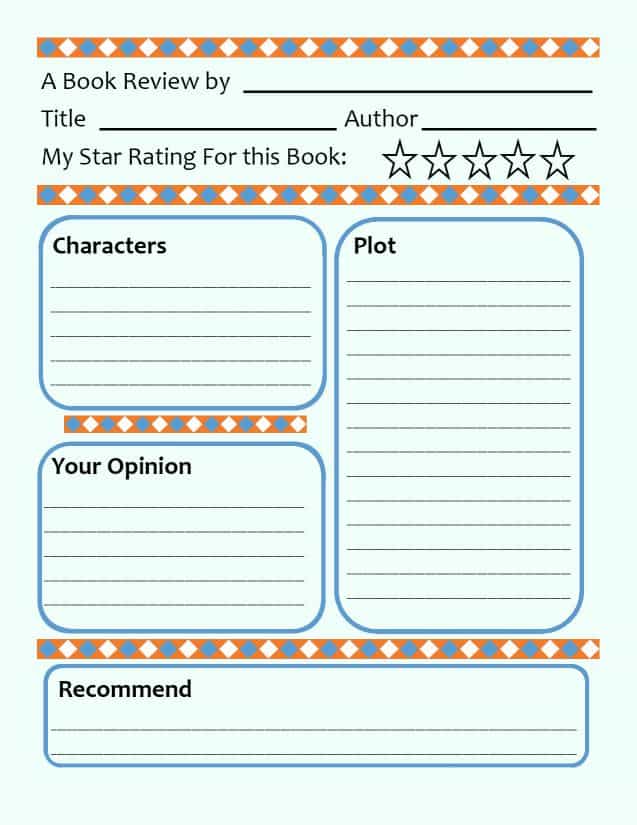
Are your kids exited to write a book review? Wondering how to guide them on it? Then we are here to help you, as we have provided wonderful set of book review templates for kids in this page that will attract your kids. Do you want to make one on your own? Well, that is allowed as well. All you have to do is to just chose your template from here and download it for free. As we have designed it for your ease, you can just edit the template as per your need by changing the font, background, borderline of the template etc and create/make your own Book review templates within seconds,without spending even a single penny from your pocket. Is it not amazing? Create one instantly and help your kids write a book review.
Uses of Book review template?
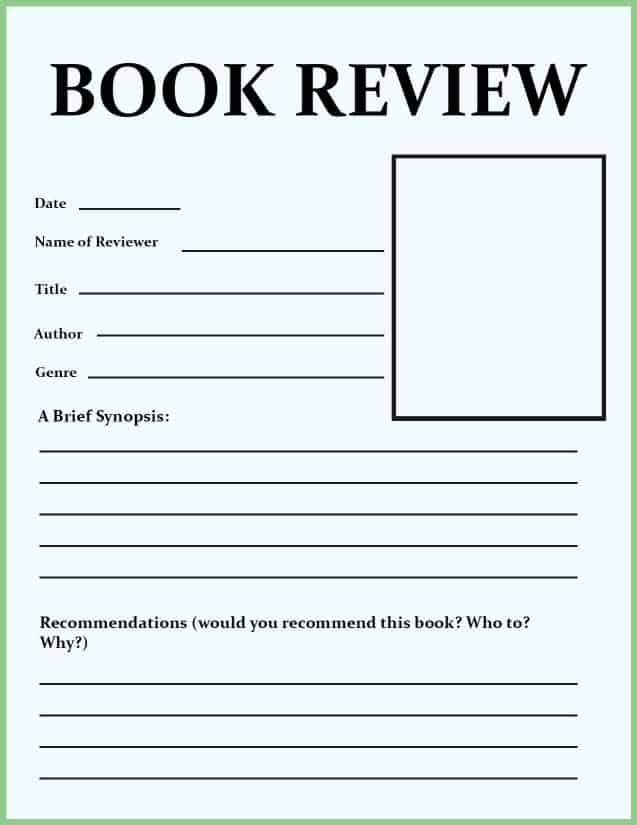
Let us see below the uses of writing a book review.
- Will help the kids to improve their creative writing skills and reading comprehension.
- Will encourage the kids to share their opinion
- Will help others to decide on whether to read/purchase the book or not.
- Will provide the in-depth analysis of the story and content of the book.
- Will capture the main theme of the book and help readers understand the author’s style.
These are few of the benefits of writing a book review. Apart from these it will improve their book reading skills and increase their interest to read more books and write review for those.
How to use – Book review template for teaching in classroom
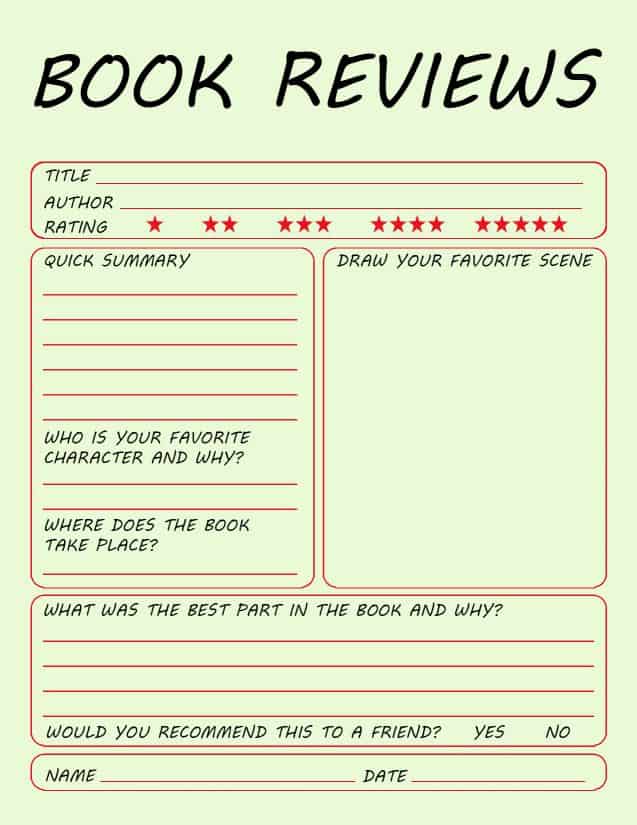
In order to help teachers with book review templates and few sample activities that would help them teach in the classroom,we have listed few activities as below to make their work easy:
- Providing Sample Book review – You can take few sample reviews written by others for a book and share it in the classroom for the kids to basically understand what is a book review and what are the basic elements and points to be captured while writing a book review. Best source to teach them is from the famous/favorite magazine or even newspaper.
- Together read a book review – Pick up an appropriate and favorite book review and read it aloud along with the students in the classroom. Cover everything from title of the book, author, brief summary of the book, strengths and weakness and your own personal opinion about the book.
- Provide a book to review – Provide a book or a short story to read in the classroom and write their review about it. Encourage them to make note of the key points of the story Post which you can read the review they have written and correct those along with the students.
- Questions about the book – Provide a book review template template and guide them with few questions that will help them recollect the incidents in the story and come-up with a good review. Questions should cover on the genre of the book (whether it is Comic or fantasy or detective or humor), about the favorite part of the book, likes and dis-likes, about the main characters of the book, briefly about the author of the book, did they enjoy reading the story, etc. Also ensure to have their reviews explained in details.
- Classroom flip book review activity – Prepare a flip book with an interesting topic and introduce it to the students. Provide them with a book review template from him as per your wish and let them write review on the flip book. This will help them improve their thinking capacity as well.
How to use – Book Review template for students
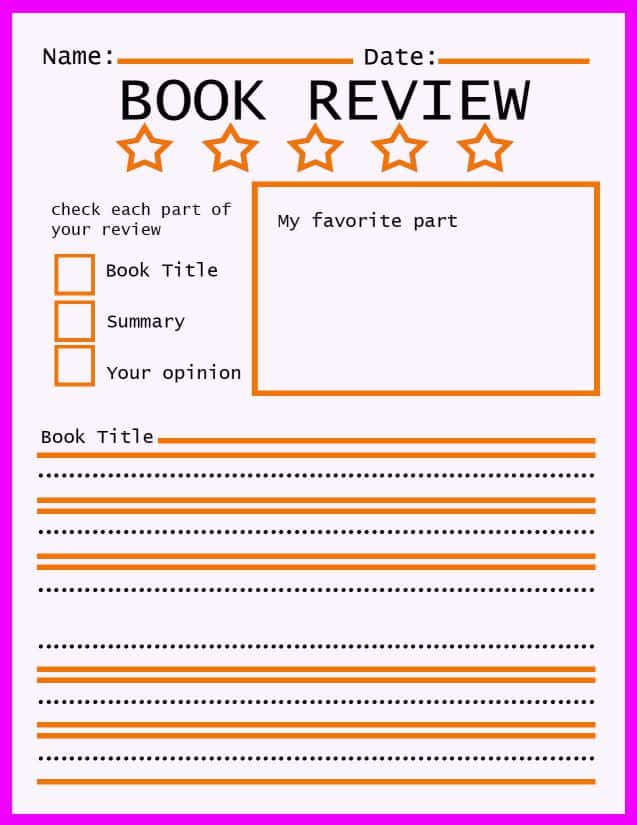
Making children write a book review is a great way to motivate them to read lot of books. Having said that let us see few activities that will help them learn and write a good and perfect book review.
- Book review activity Packet – You can choose a sample book for the students to read, be it a short-story or fun book or a comic story. To start with you can provide them a book under their favorite genre which will help them read it with full involvement and write a good review. Then you can choose a template from here for there to express their thought and opinion about the book and write a review.
- Character book review Activity – Decide a book for the student to read, preferably a picture book or fun book. Later you can collect the pictures of the different characters in the book and make cards out of it. Once the student completes the book, you can provide these cards carrying different characters in the book and as them to write review about each character. This will help children to understand and judge themselves with how much involvement they have read the book.
All the activities listed above looks awesome right? Waiting to involve your kids/students in reading books and write a review for the book? Then you can involve them in any of the above activities. To start with, you can make them read a book of their favorite genre, which will help them practice writing a book review at initial times.
Can Book Review Template help kids to learn science?
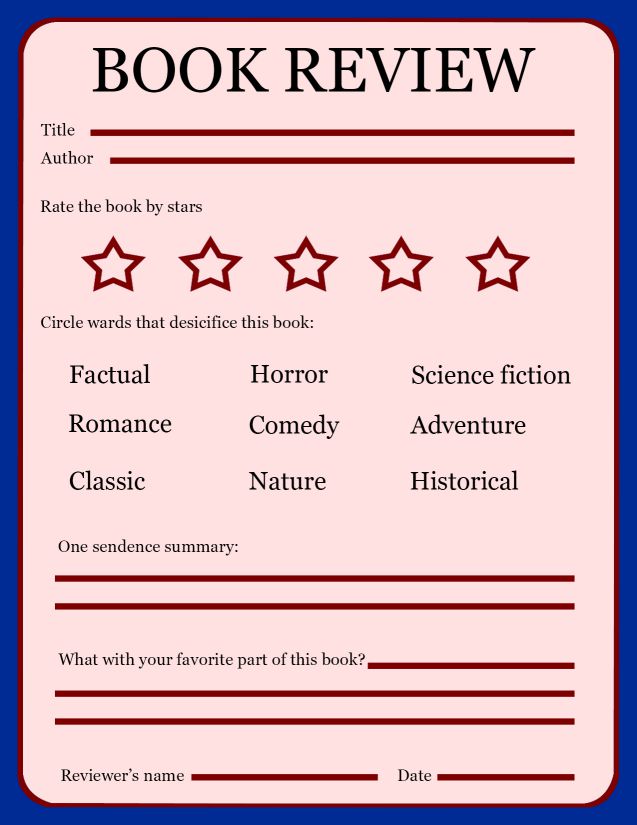
In order to make students develop their interest towards science, you can introduce it to them through book review activity as well. Wondering how? Here is an example for you to help them develop their interest towards science. You can create a Flip book with different forms of energy (like heat, sound,chemical,thermal etc) or any other science related topics like state of matter or chemical changes, with the pictures related to it. You can ask students to make a research on each of the picture in the flip book, hence introducing science to them.
Help them in understand it which in-turn will make them write good reviews. Later, once they complete the flip book, provide them with few book review templates and as them to write their opinion about each science topic in the flip book, that will help them know their understanding about the science and develop interest towards science. Similarly you can make them read various science related fun books (like 11 Experiments That Failed or Ada Twist – Scientist) which will introduce science to them and ask them to write review for the same.
Tips to help your kids write a book review
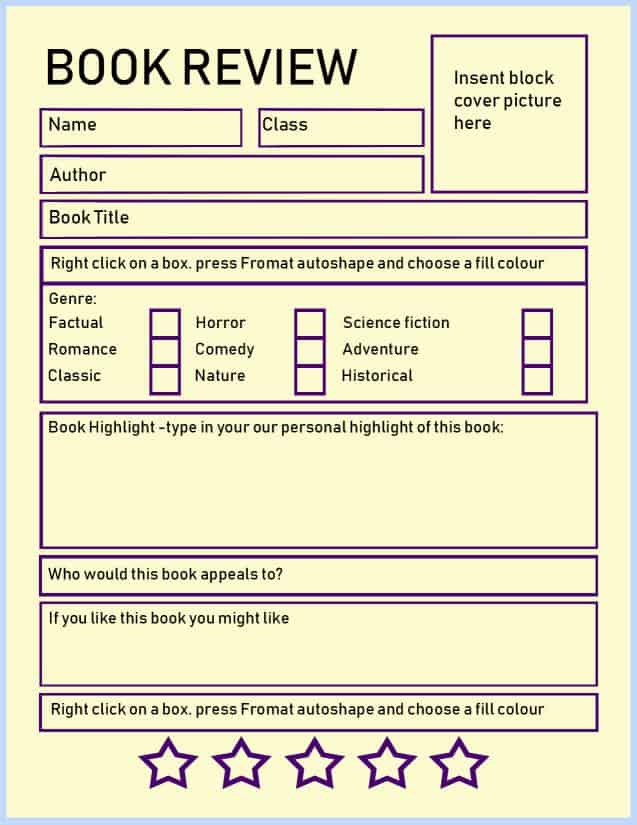
Writing a book review is not an easy task for the children at initial times. Below are you tips which will help you guide your children to write a good book review.
- Motivate them to make note of the important points while reading the books. This will help them remember the favorite characters and scenes in the book.
- Make them ask questions about the book to come-up with an perfect book review.
- Guide them to have a structure for the book review they write. For example , starting from the Author to the strength and weakness of the book.
- You should be ready to proofread it at the end. Once the kids complete writing a review, you should have a check on it for any spelling mistakes, meaning of the phrases and help them correct their mistakes in the next review.
Do’s and Don’ts of a Book review
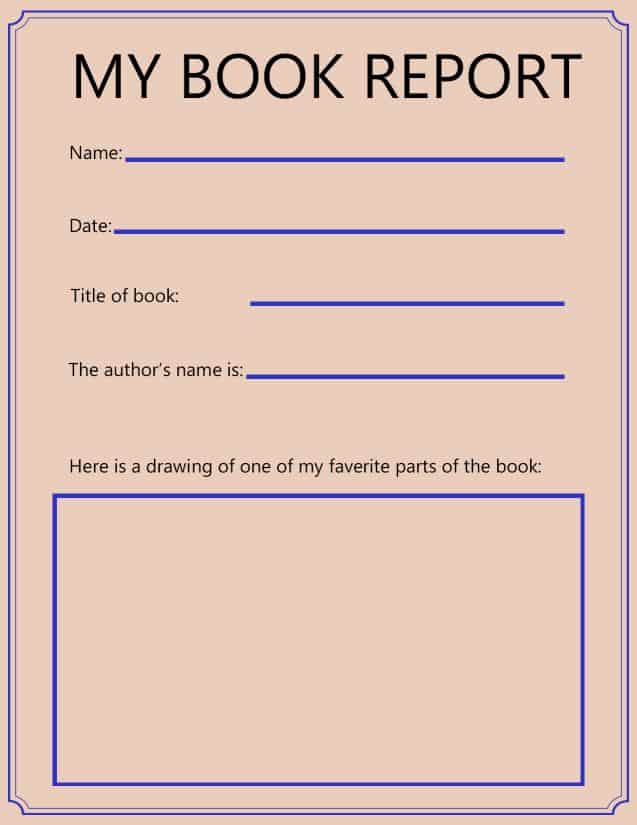
Having discussed in details on how to write a book review, we shall now see the do;s and dont’s while reviewing a book.
- Provide a short phrase/title that will explain your review’s content.
- Be very specific in describing what you liked or did not like in the book. Do not generally say “it was bad”,”not satisfactory”. Describe why was it bad and not satisfactory.
- Do not drag the review too long. Make it crisp and brief. Do not completely summarize the book.
- Do not criticize it badly just because it was not as how you expected.
- Describe your favorite character and be very careful and conscious in what you say about the story to avoid controversies.
Following these points along with the tips, you can select any of the activities along with the book review template from our page and teach your kids on how to write a good book review.
Leave a Reply Cancel Reply
Your email address will not be published. Required fields are marked *
Name *
Email *
Add Comment *
Save my name, email, and website in this browser for the next time I comment.
Post Comment
- Grades 6-12
- School Leaders
Enter Today's Teacher Appreciation Giveaway!
Every product is independently selected by (obsessive) editors. Things you buy through our links may earn us a commission.
60 3rd Grade Books To Add to Your Classroom Library
Third grade should be a year of awesome books.
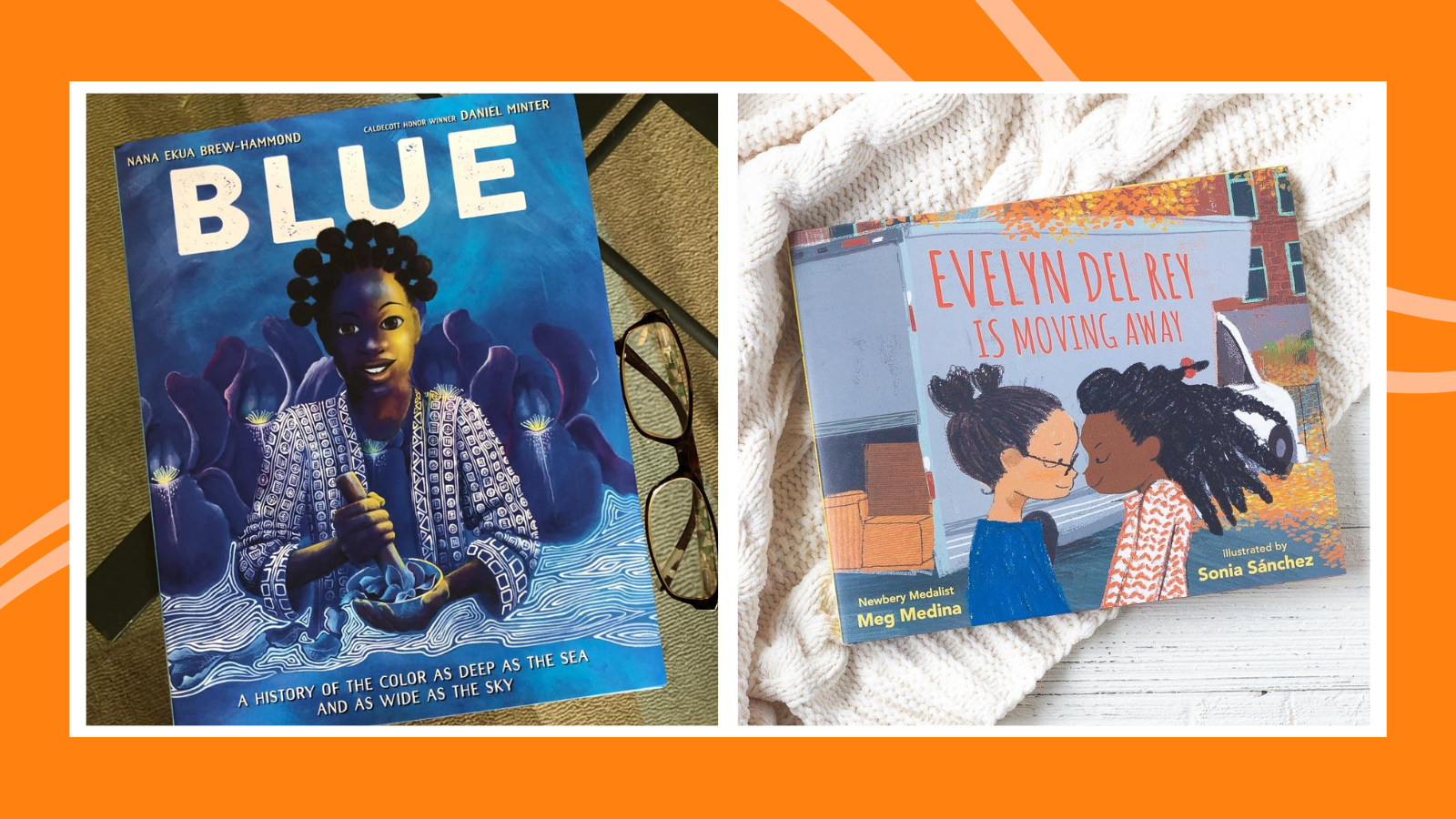
Third graders are in the sweet spot between innocent and independent, and it’s such fun to share a wide range of books with them. You’ve got your old standbys, but fresh titles are always needed. Here are 60 recent third grade books we think could become your new favorites to read aloud and offer to students.
1. I’m From by Gary Gray Jr.
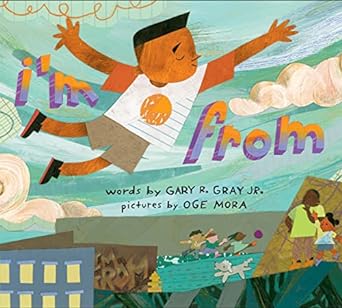
This mesmerizing memoir poem of one boy’s school day shows readers that everyone is from a rich, detailed “somewhere.” From the bus driver’s threats to “SIT DOWN” to school “books that don’t click with me,” to buttermilk biscuits and baked beans for dinner, the text overflows with small but meaningful details. We’re definitely adding this to our third grade books inspire students’ own poetry or narrative writing.
Buy it: I’m From on Amazon
2. I Am Every Good Thing by Derrick Barnes and Gordon C. James
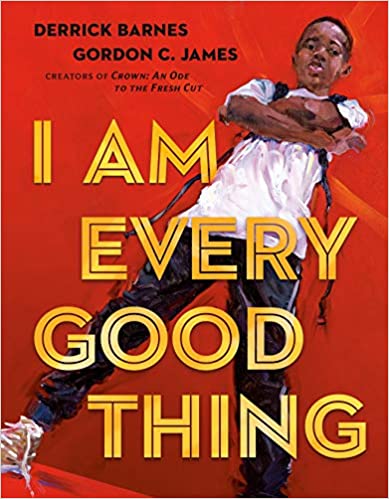
This inspirational book exudes Black joy as it celebrates black boys’ resilience, creativity, perseverance, and kindness. There are so many concrete examples to which all students can connect, and the language is guaranteed to leave readers energized and inspired. Read this one every year!
Buy it: I Am Every Good Thing on Amazon
3. Evelyn Del Rey Is Moving Away by Meg Medina
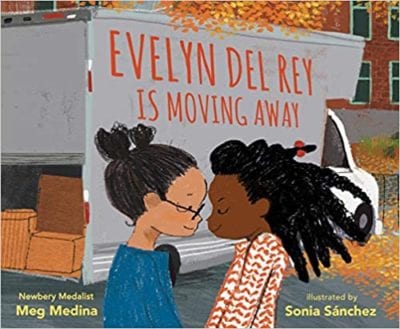
It’s moving day for Daniela’s best friend and neighbor, Evelyn Del Rey. Daniela narrates their final moments together in heart-wrenching detail as she lists all the reasons she’ll miss her friend. We love this story for discussing characters’ emotional responses to events, and as a writing mentor text when studying narrative voice.
Buy it: Evelyn Del Rey Is Moving Away on Amazon
4. The Day You Begin by Jacqueline Woodson
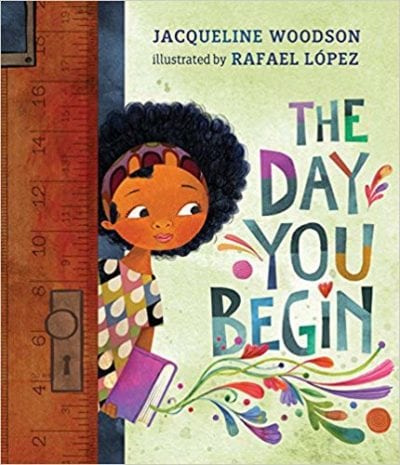
We just can’t stop reading this one again and again. Encourage students to find their voices and connect with one another.
Buy it: The Day You Begin on Amazon
5. My Baba’s Garden by Jordan Scott
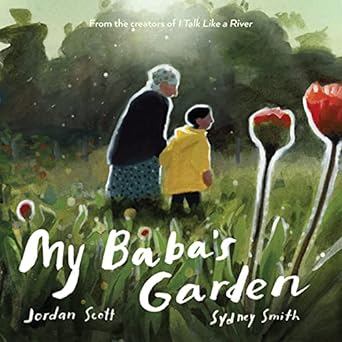
This gorgeous title is perfect for conversations about kindness and as a narrative-writing mentor text . A young boy spends lots of time at his grandmother’s tiny house, enjoying her delicious cooking and helping in her garden. When her house is torn down and she moves in with the boy and his parents, he tries to repay her kindness by evoking happy memories.
Buy it: My Baba’s Garden on Amazon
6. The Walking School Bus by Aaron Friedland and Ndileka Mandela
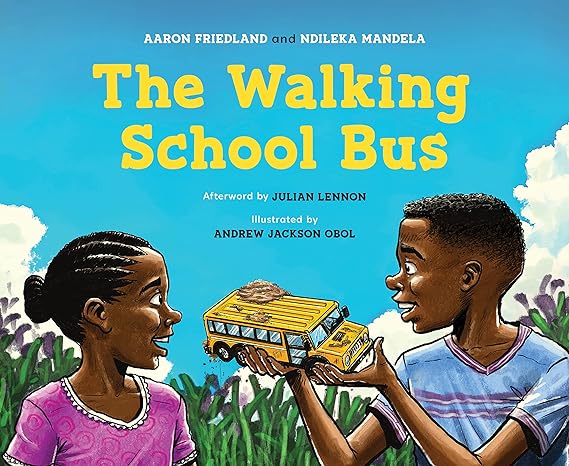
It’s too dangerous for siblings Shaka and Nandi to walk alone to school when their father gets a new job. They’re so disappointed not to be able to attend that they think up a community-based solution: They encourage lots of local children to travel together as a walking “school bus.” Add this to your third grade books to read aloud and spend time thinking and discussing as a group. The back matter gives more information about kids’ real-life obstacles in getting to school.
Buy it: The Walking School Bus on Amazon
7. The One Day House by Julia Durango
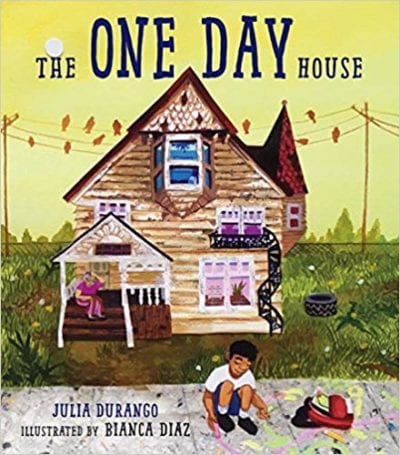
Wilson longs to help Gigi fix up her house, even though she reassures him his company is more than enough. One day, with the support of his community, he’s able to realize his intentions.
Buy it: The One Day House on Amazon
8. The Very Last Castle by Travis Jonker
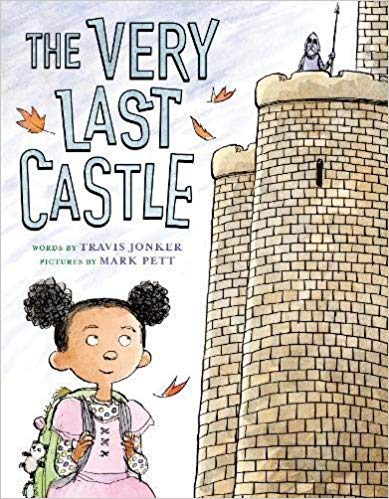
This traditional tale with a twist stars Ibb, the one girl brave enough to investigate who actually lives in the old castle that stands in the middle of town. Rumors run rampant, but the truth surprises everyone.
Buy it: The Very Last Castle on Amazon
9. The Proudest Blue: A Story of Hijab and Family by Ibtihaj Muhammad
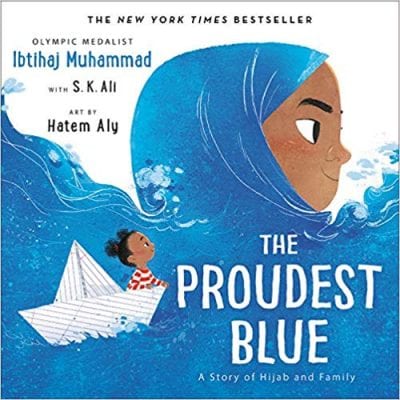
Faizah admires her older sister on her first day of hijab—both for wearing her “proudest” color blue with strength and beauty and for resisting the hurtful words of others. This inspirational story is written by the first female Muslim American Olympic medalist.
Buy it: The Proudest Blue: A Story of Hijab and Family on Amazon
10. Drawn Together by Minh Lê and Dan Santat
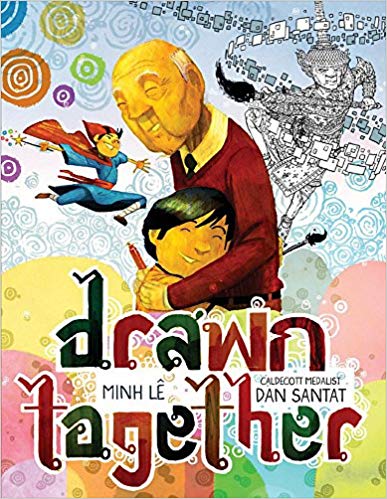
Remind students about the many forms of communication with this gorgeous, almost wordless title. A boy and his grandfather speak different languages, but they connect through art.
Buy it: Drawn Together on Amazon
11. Hurricane by John Rocco
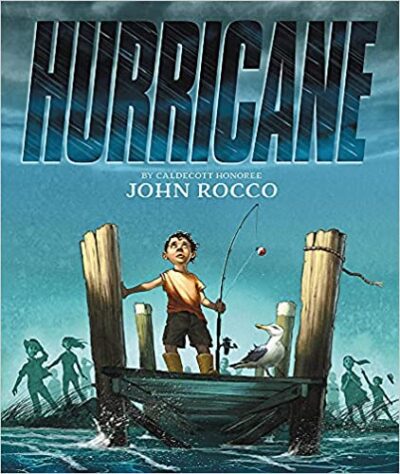
John Rocco’s disaster stories are so fun to read aloud, and they’re fantastic for inspiring kids’ own narrative writing . When a hurricane tears through the area, a young boy’s favorite spot, the neighborhood dock, is wrecked. Can it be rebuilt? This would be fun to share as part of a weather unit too.
Buy it: Hurricane on Amazon
12. Still This Love Goes On by Buffy Sainte-Marie and Julie Flett
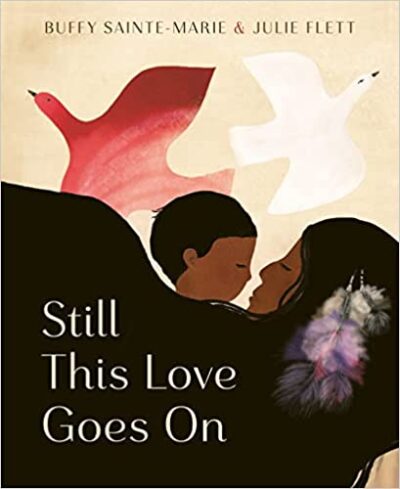
This gorgeous illustrated version of a song by an award-winning Cree singer-songwriter will take your breath away. Share it as part of a study of indigenous cultures, to practice determining themes, or to inspire student poetry. (We also just really want to see a school chorus concert with kids singing this song!)
Buy it: Still This Love Goes On on Amazon
13. Copycat: Nature-Inspired Design Around the World by Christy Hale
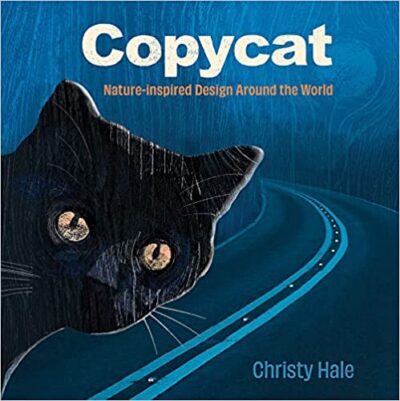
Tanka poems, stunning photos, and fascinating back matter give kids an introduction to biomimicry—design that imitates nature. This is a unique addition to your third grade STEM books, for sure.
Buy it: Copycat: Nature-Inspired Design Around the World on Amazon
14. Counting in Dog Years and Other Sassy Math Poems by Betsy Franco
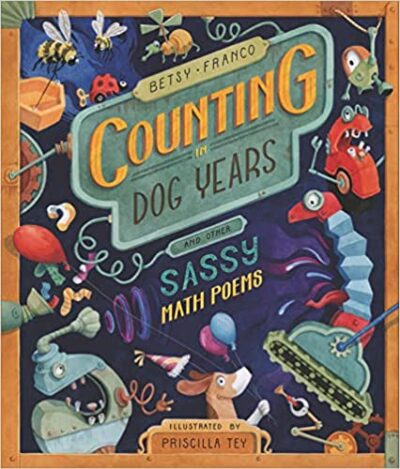
We love third grade books that do double duty. These funny poems will also help kids practice math concepts like multiplication and fractions.
Buy it: Counting in Dog Years and Other Sassy Math Poems on Amazon
15. The Great Banned-Books Bake Sale by Aya Khalil
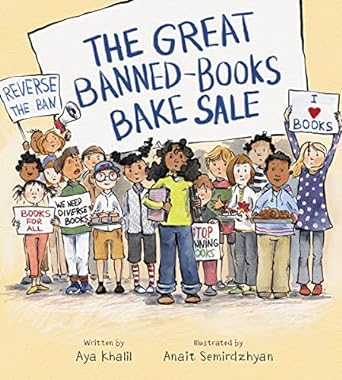
Kanzi, star of the book The Arabic Quilt: An Immigrant Story , is shocked to find an entire display of diverse books gone from her school library. Her class learns that the books have been banned by their district, and they decide to take action. They plan a bake sale and protest. Share this title to educate students about the issue of book banning and to share a relatable example of kid-powered activism.
Buy it: The Great Banned-Books Bake Sale on Amazon
16. Listen: How Evelyn Glennie, a Deaf Girl, Changed Percussion by Shannon Stocker
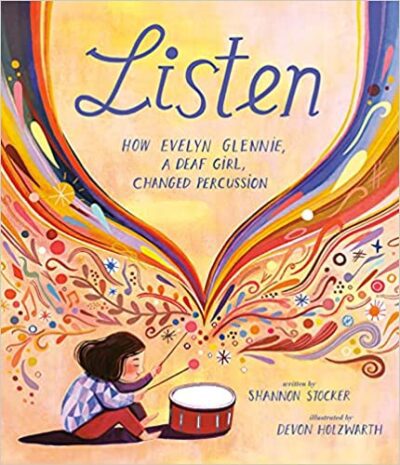
This story of defying expectations is one of our new favorite third grade books to spark classroom discussion. Don’t miss the author’s note: It explains how the author, also a disabled musician, used her own experiences and real-life conversations with the book’s subject to make sure her writing was authentic.
Buy it: Listen: How Evelyn Glennie, a Deaf Girl, Changed Percussion on Amazon
17. The Next President: The Unexpected Beginnings and Unwritten Future of America’s Presidents by Kate Messner
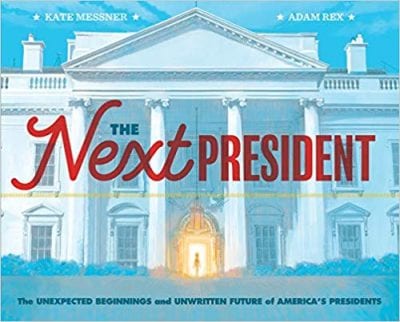
Here’s a creative and empowering take on an informational book about presidents. What were future presidents doing when their predecessors took office? Students can begin to think about where great leaders start and explore their own potential.
Buy it: The Next President on Amazon
18. Butterflies Belong Here: A Story of One Idea, Thirty Kids, and a World of Butterflies by Deborah Hopkinson
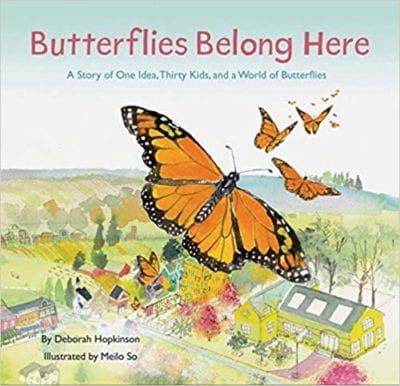
A girl who is a recent immigrant finds her voice through environmental activism. When she notices there are no monarch butterflies in her community, she leads efforts to plant a monarch way station. Share this story to help kids find their own passions, make plans, and create change.
Buy it: Butterflies Belong Here on Amazon
19. Respect: Aretha Franklin, the Queen of Soul by Carole Boston Weatherford
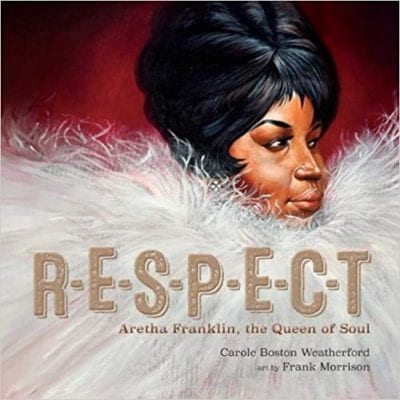
This title packs powerful messaging into sparse text and gorgeous artwork in a way that reminds us of Martin’s Big Words by Doreen Rappaport. This is an excellent addition to a collection of biography mentor texts. Mentions of Aretha’s performances at multiple presidential inaugurations tie this title to election conversations too.
Buy it: Respect: Aretha Franklin, the Queen of Soul on Amazon
20. Digging for Words: José Alberto Gutiérrez and the Library He Built by Angela Burke Kunkel
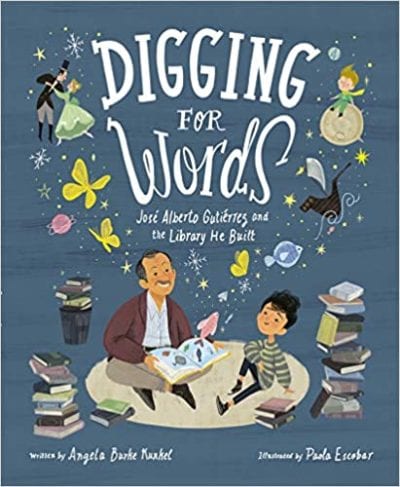
Parallel stories tell of a Colombian garbage collector who salvages discarded books and a young boy who waits all week for library day. This narrative nonfiction title is a heartwarming celebration of the power of books to both transport and connect readers.
Buy it: Digging for Words: José Alberto Gutiérrez and the Library He Built on Amazon
21. Show and Tell! Great Graphs and Smart Charts: An Introduction to Infographics by Stuart J. Murphy
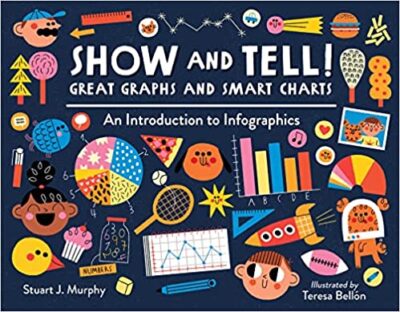
Today’s kids are living in a visual world. Introduce bar graphs, pie charts, pictographs, and line graphs with fun illustrations and examples. Great for launching a math unit about representing data.
Buy it: Show and Tell! Great Graphs and Smart Charts on Amazon
22. Blue: A History of the Color as Deep as the Sea and as Wide as the Sky by Nana Ekua Brew-Hammond
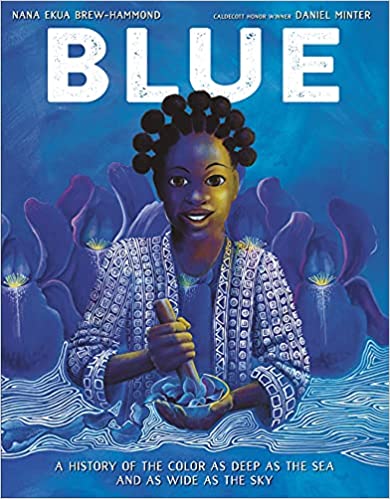
This unique and captivating book is one for every social studies classroom! Get students thinking about connections across history, science, geography, and the arts through the lens of the color blue.
Buy it: Blue on Amazon
23. Go Show the World: A Celebration of Indigenous Heroes by Wab Kinew
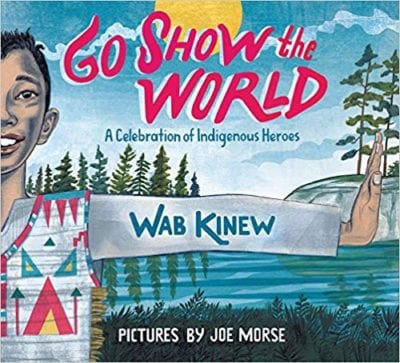
This book offers brief introductions to a variety of notable figures in history, sports, medicine, and more. The author’s note gives a helpful context.
Buy it: Go Show the World: A Celebration of Indigenous Heroes on Amazon
24. If You’re a Kid Like Gavin by Gavin Grimm and Kyle Lukoff
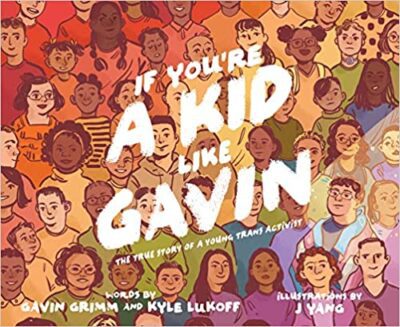
This OwnVoices story of transgender activist Gavin Grimm is empowering and important for all kids. Gavin made headlines for bravely speaking out about his right to choose which bathroom to use at school. Teachers will find the language so useful for building a classroom community in which transgender individuals—and all individuals—can be supported and celebrated.
Buy it: If You’re a Kid Like Gavin on Amazon
25. Made for Each Other: Why Dogs and People Are Perfect Partners by Dorothy Hinshaw Patent
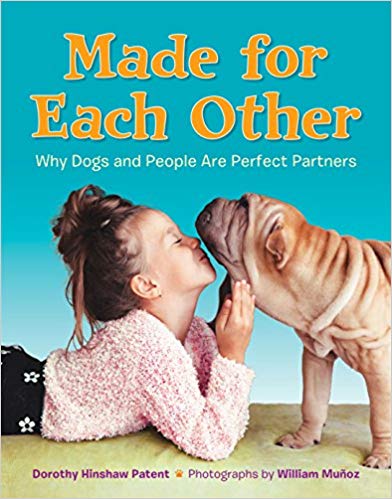
This impeccably organized and focused title is perfect for introducing an author’s message in nonfiction. Bonus: adorable dog photos!
Buy it: Made for Each Other: Why Dogs and People Are Perfect Partners on Amazon
26. Breaking Through the Clouds: The Sometimes Turbulent Life of Meteorologist Joanne Simpson by Sandra Nickel
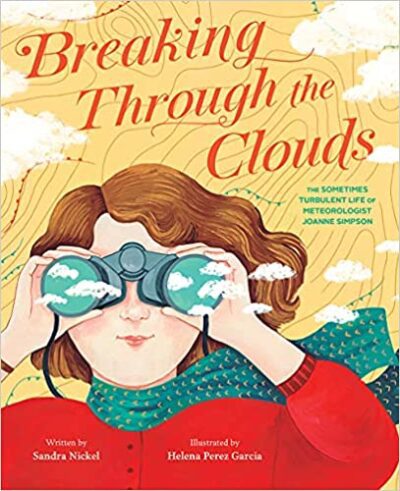
Joanne Simpson was the first woman to receive a doctorate in meteorology. Her research changed the world’s understanding of clouds. Expand kids’ understanding of the field of weather studies with this fascinating biography.
Buy it: Breaking Through the Clouds on Amazon
27. Starstruck: The Cosmic Journey of Neil deGrasse Tyson by Kathleen Krull and Paul Brewer
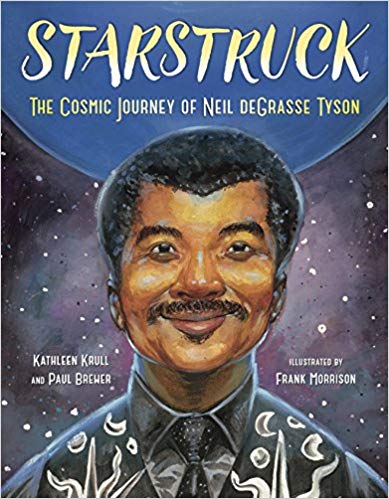
“America’s Astrophysicist,” the charismatic Neil deGrasse Tyson started out as a regular city kid focused on friends and fun—and on learning as much about the stars as he possibly could. We love how this biography shows that not all scientists are introverts.
Buy it: Starstruck: The Cosmic Journey of Neil deGrasse Tyson on Amazon
28. Killer Underwear Invasion! How To Spot Fake News, Disinformation & Conspiracy Theories, by Elise Gravel
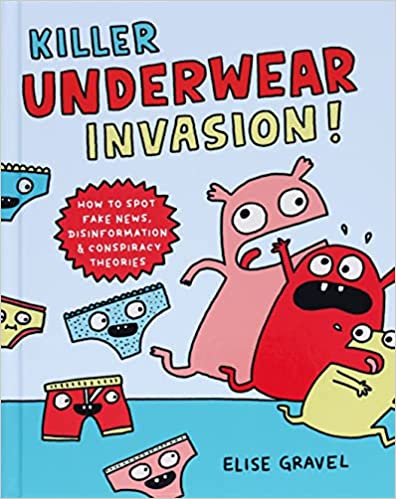
Put this one at the top of your pile of third grade books about media literacy. One of our favorite authors takes on the timely topics of fake news, confirmation bias, fact vs. opinion, and credible sources. The outlandish examples and silly illustrations make this important content memorable for kids.
Buy it: Killer Underwear Invasion! on Amazon
29. The Water Lady: How Darlene Arviso Helps a Thirsty Navajo Nation by Alice B. McGinty
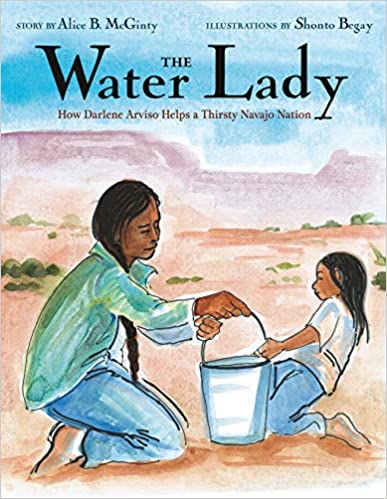
Every day Darlene Arviso drives kids to school and then uses her school bus to deliver clean water to families of the Navajo Nation. This powerful true story, along with the author’s note, will give classrooms lots to discuss. It could easily inspire wonder, research, and activism too.
Buy it: The Water Lady: How Darlene Arviso Helps a Thirsty Navajo Nation on Amazon
30. Wait! What? series by Dan Gutman
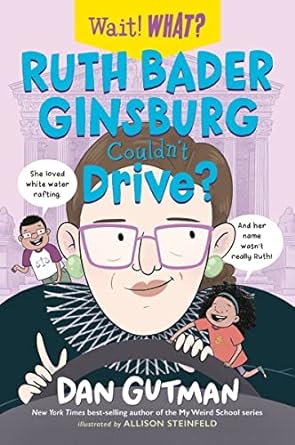
When we learned that Dan Gutman had a biography series, we knew we’d love it. These titles introduce famous historical personalities from a kid-centered perspective. Each book is formatted as a conversation between two siblings who try to one-up each other with interesting facts about the book’s subject that go beyond “stuff your teacher wants you to know.” Add these to your third grade biography books collection for the kids who say biographies are boring!
Buy it: Wait! What? series on Amazon
31. The Skull: A Tyrolean Folktale by Jon Klassen
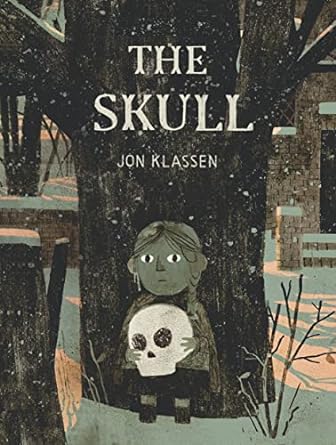
This retold Austrian folktale is moderately creepy, but it has heartwarming messages about friendship too. A girl named Otilla runs away from home. She happens upon a grand abandoned house in the forest and befriends a skull that lives there, proving her loyalty when the skull’s skeleton body comes looking for it. The afterword is especially interesting to share with third graders when you study folktales. The author talks about how he arrived at this particular retelling and the power of folktales to be uniquely shaped by each person who enjoys them.
Buy it: The Skull: A Tyrolean Folktale on Amazon
32. City of Dragons series by Jaimal Yogis and Vivian Truong
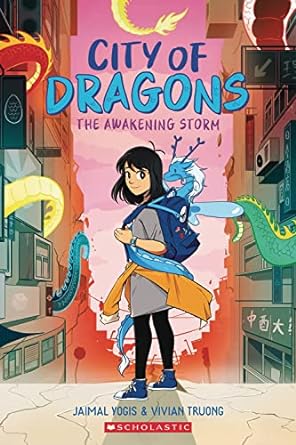
Set in present-day Hong Kong, this graphic novel series stars Grace, who’s given a mysterious egg that hatches into a water dragon she calls Nate. Grace and her new friends have to protect Nate from unsavory characters. The mix of Chinese mythology with modern themes like making new friends and teamwork make these ideal third grade books.
Buy it: City of Dragons series on Amazon
33. Locker 37 series by Aaron Starmer
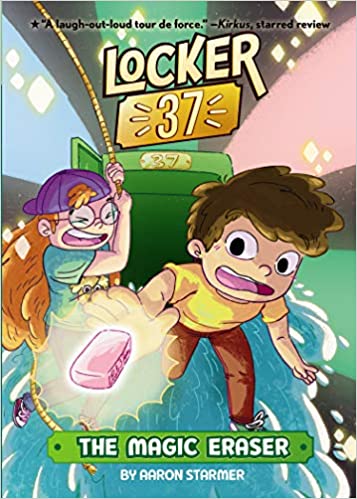
Wouldn’t it be perfect if there was a way to fix any problem that’s ruining your school day? At Hopewell Elementary, select students can rely on Locker 37, a magical trove of helpful tools. Fast-paced and relatable, these are excellent third grade books to keep your students reading.
Buy it: The Magic Eraser (Locker 37 #1) on Amazon
34. Dragons in a Bag series by Zetta Elliott
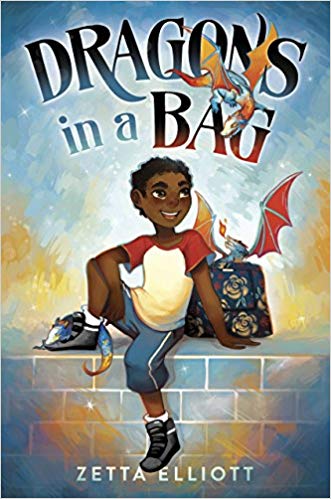
When his mom drops him off with Ma, a mysterious character from her own childhood, Jaxon has no idea he’ll travel into the world of magic and end up in charge of baby dragons. We love this urban fantasy series.
Buy it: Dragons in a Bag series on Amazon
35. Best Wishes series by Sarah Mlynowski and various authors
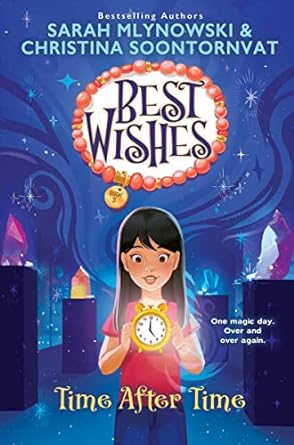
We love this author’s other magic-themed series ( Whatever After and Upside-Down Magic ) so we’re definitely adding this new set of stories starring diverse characters to our third grade books. In each title, a girl in distress receives a magic bracelet in the mail that promises to grant wishes.
Buy it: Best Wishes series on Amazon
36. Just Harriet series by Elana K. Arnold

Many reviewers compare these quiet titles to Beverly Cleary’s beloved Ramona series. Harriet Wermer loves to puzzle over mysteries during her summer stay on Marble Island. She also, it turns out, tends to stretch the truth … often. This can make it hard to get adults to listen to her. Share these titles with your third graders who love relatable, endearing characters.
Buy it: Just Harriet series on Amazon
37. The Magnificent Makers series by Theanne Griffith
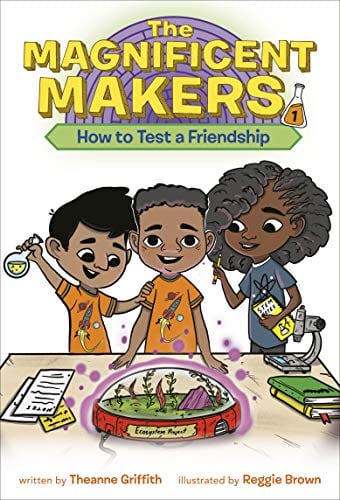
This series stars third graders Violet and Pablo as they take science-themed adventures that include transport by magical science instruments to a challenge-filled Maker Maze, a guide that reminds us of Miss Frizzle, and fun project directions for home. As a neuroscientist and a mom, this author knows what will get kids excited about reading and science!
Buy it: Magnificent Makers series on Amazon
38. Julieta and the Diamond Enigma by Luisana Duarte Armendáriz
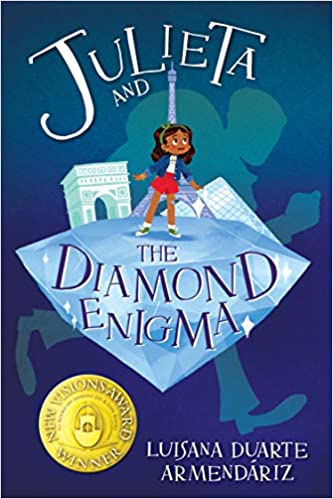
A father-daughter pair navigates a Paris art heist in this fast-moving story packed with tons of interesting background information for kids. It’s perfect for third grade readers who love mysteries, travel adventures, and plucky, determined main characters. It would also be a popular chapter book for a class read-aloud.
Buy it: Julieta and the Diamond Enigma on Amazon
39. The Magnificent Mya Tibbs series by Crystal Allen
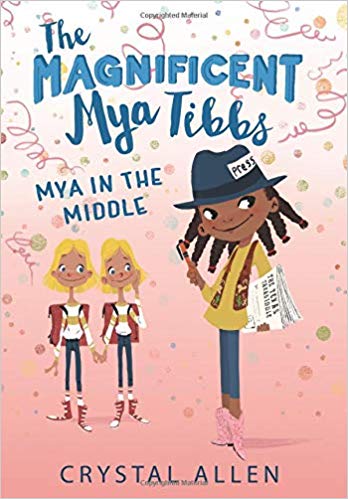
These sweet stories will take students to small-town Texas, where 9-year-old Mya navigates the ups and downs of family life and school with plenty of spunk. A great series for a third grade library.
Buy it: The Magnificent Mya Tibbs series on Amazon
40. Marya Khan series by Saadia Faruqi
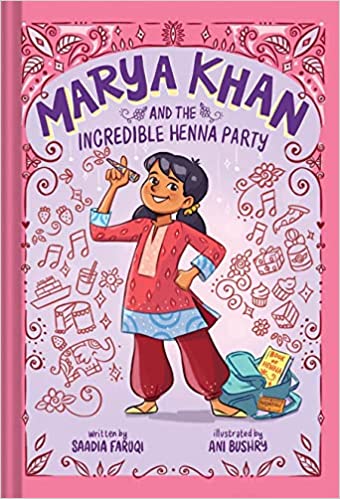
This series opener from the author of the popular Yasmin early reader series is ideal for third graders. In the series opener, Marya is desperate for an over-the-top awesome birthday party like her neighbor Alexa. She can’t resist telling her classmates about it … even before getting the OK from her family.
Buy it: Marya Khan series on Amazon
41. Marcus series by Kevin Hart
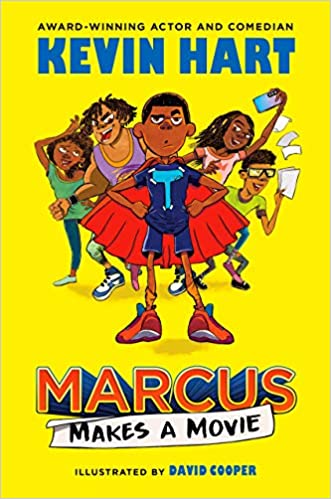
Tap into kids’ love of YouTube and videography with this fast-paced and fun series. Marcus takes an after-school film class and starts dreaming of turning his cartoon drawings into a hit movie. These books will have kids wondering: Could they be famous one day? Written by actor and comedian Kevin Hart.
Buy it: Marcus Makes a Movie and Marcus Makes It Big on Amazon
42. The Unicorn Rescue Society series by Adam Gidwitz
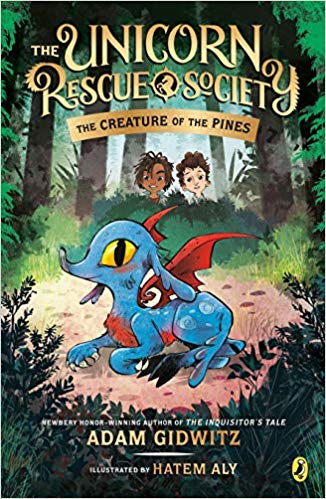
In this engaging and highly readable series, Elliot and Uchenna join their odd teacher, Professor Fauna, on quests to protect mythical creatures.
Buy it: The Unicorn Rescue Society series on Amazon
43. A Boy Called Bat series by Elana K. Arnold
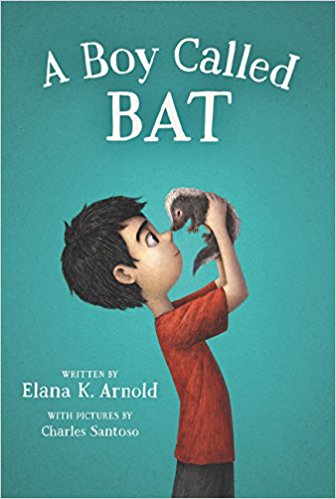
Meet Bat, an unforgettable third grade boy on the autism spectrum, as he tries to show his mom that a baby skunk can be the perfect pet. Also check out Bat and the Waiting Game and Bat and the End of Everything .
Buy it: A Boy Called Bat on Amazon
44. Once Upon a Tim series by Stuart Gibbs
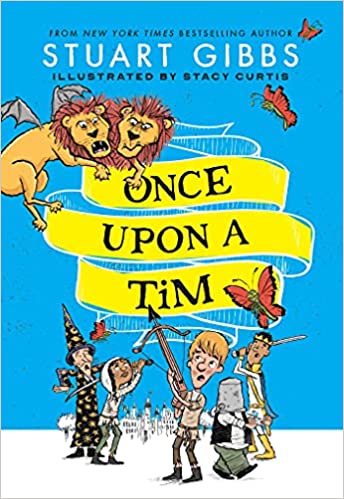
This new series from a favorite author is readable, quirky, and fun. Tim, a smart-aleck peasant, finds himself wrapped up in a royal rescue scheme. This could make a great student book club choice. Keep an eye out for the sequel too.
Buy it: Once Upon a Tim series on Amazon
45. Jada Jones series by Kelly Starling Lyons
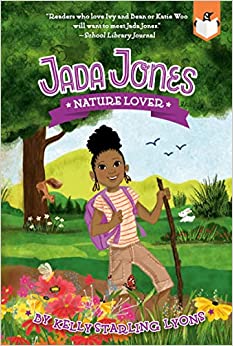
We adore Jada Jones for her realistic kid voice and her love of everything STEM. This series reflects common childhood dilemmas and drama with fresh-feeling details and plenty of heart. Also check out the Miles Lewis series by the same author.
Buy it: Jada Jones series on Amazon
46. The First Cat in Space Ate Pizza by Mac Barnett
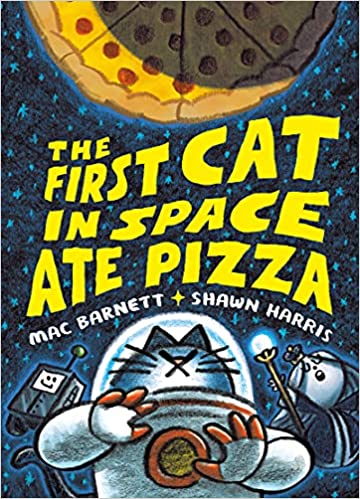
Your collection of third grade books should definitely include a hysterical crowd-pleaser like this one. A cat launches a space expedition to save the moon from hungry rats. It’s weird and adventurous and sure to be passed all around the class.
Buy it: The First Cat in Space Ate Pizza on Amazon
47. Stinkbomb and Ketchup-Face series by John Dougherty
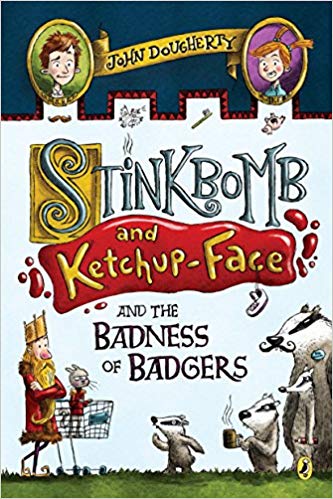
These British imports, recently re-released with updated illustrations, will appeal to students who like wacky humor. Stinkbomb and his messy little sister Ketchup-Face get themselves into madcap adventures in this fun series of third grade books.
Buy it: Stinkbomb and Ketchup-Face series on Amazon
48. Fantastic Frame series by Lin Oliver
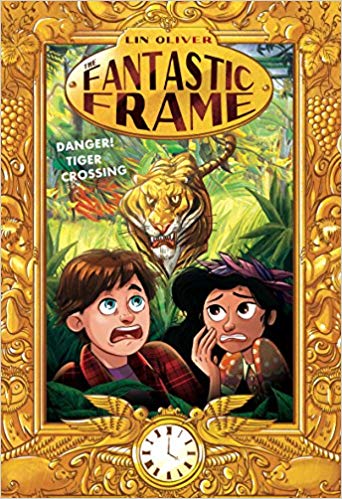
This five-book series about a magical golden frame that transports time travelers into the historic world of famous paintings has a lot to offer: full-color illustrations, modern characters, a bit of art history, tons of adventure—and the thrill and tension of a ticking clock!
Buy it: Fantastic Frame series on Amazon
49. Family Fletcher series by Dana Alison Levy
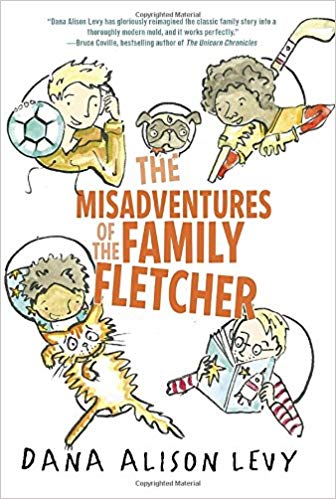
The hilarious but realistic antics of the two dads and four adopted brothers in the Fletcher family make for enjoyable tales for your latest third grade books.
Buy it: Family Fletcher series on Amazon
50. Iggy series by Annie Barrows
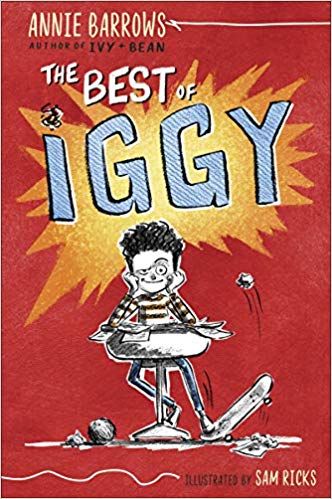
LOL-worthy series alert! Iggy Frangi has a long list of complaints against him—and plenty of smart responses to explain away his behavior.
Buy it: Iggy series on Amazon
51. Lucy McGee series by Mary Amato
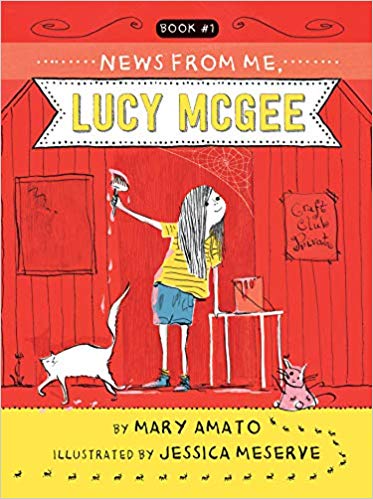
Mary Amato definitely understands upper elementary peer dynamics, and her books are surefire hits with third graders. Meet spirited Lucy McGee, star of this accessible illustrated chapter book.
Buy it: Lucy McGee series on Amazon
52. Big Foot and Little Foot series by Ellen Potter
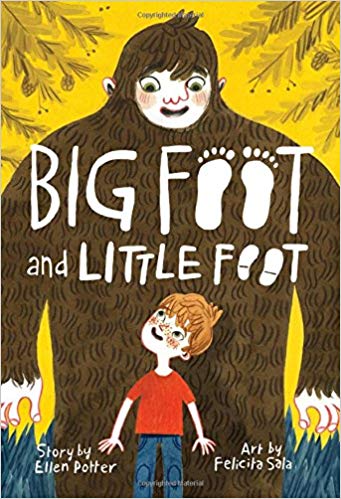
A young Sasquatch named Hugo and a young boy build an unlikely friendship despite their differences.
Buy it: Big Foot and Little Foot series on Amazon
53. The Last Kids on Earth series by Max Brallier
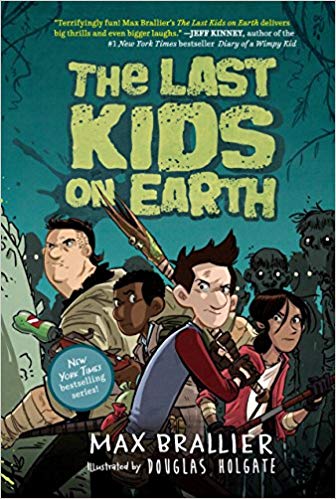
The relatable characters in these hybrid graphic novels navigate real-life kid emotions, even during apocalyptic turmoil. Plus, there’s a good dose of oozing zombie grossness to hook reluctant readers.
Buy it: The Last Kids on Earth series on Amazon
54. Sparks! series by Ian Boothby and Nina Matsumoto

Readers will cheer for the masquerading feline stars of this graphic novel—great for students who love Dav Pilkey’s Dog Man books.
Buy it: Sparks series on Amazon
55. The Lost Library by Rebecca Stead and Wendy Mass
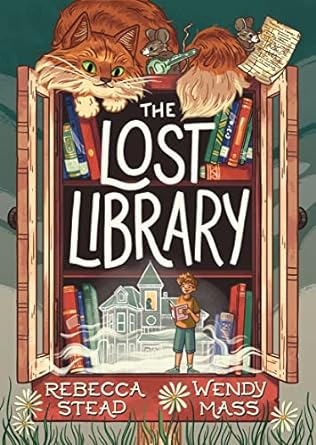
When Evan finds a peculiar new Little Free Library on his walk to school, it launches him and his best friend into a (slightly) spooky mystery. Why are all the books from the town library that burned down decades ago? Add this to your third grade books for reading aloud or book clubs. Its alternating perspectives make it perfect for talking about character traits, motivations, and relationships.
Buy it: The Lost Library on Amazon
56. Saving Winslow by Sharon Creech
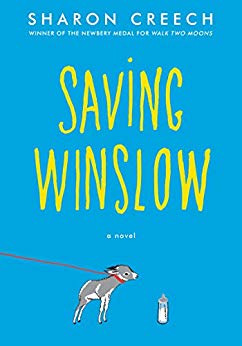
No one can pack so much emotion into a slim novel like Sharon Creech. Louie’s efforts to nurse a sickly newborn donkey back to health turn into much more in this delightful testament to hope and healing.
Buy it: Saving Winslow on Amazon
57. Packing for Mars for Kids by Mary Roach
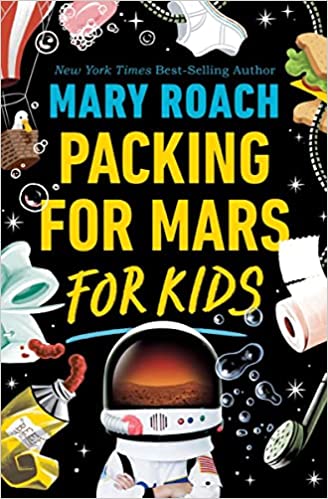
This new young readers edition of the bestselling adult nonfiction title could add some variety to your classroom read-aloud time or catch the attention of advanced readers. Surviving as a human in outer space is a complicated endeavor, as this science journalist explains with plenty of wit in chapters like “Toilet Training for Adults” and “Roommates for Very Small Rooms.” We plan on using excerpts as mentor texts for informational writing too.
Buy it: Packing for Mars for Kids on Amazon
58. Wonderland by Barbara O’Connor
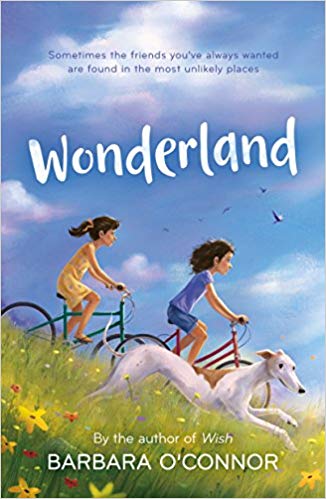
If you loved Wish , prepare to be equally as drawn in by Barbara O’Connor’s newest set of compelling characters—including Henry the dog—in this coming-of-age story.
Buy it: Wonderland on Amazon
59. The Wild Robot series by Peter Brown
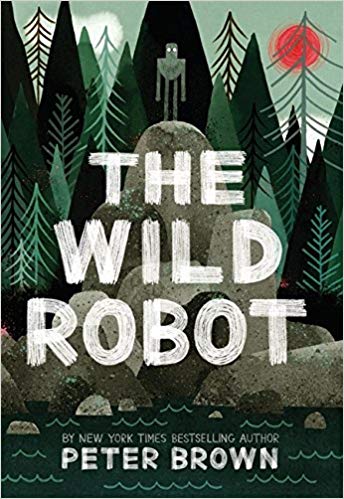
These tales about a robot marooned on a futuristic island will mesmerize your students. They offer plenty of material for discussions about perspective-taking too.
Buy it: Wild Robot series on Amazon
60. Cress Watercress by Gregory Maguire
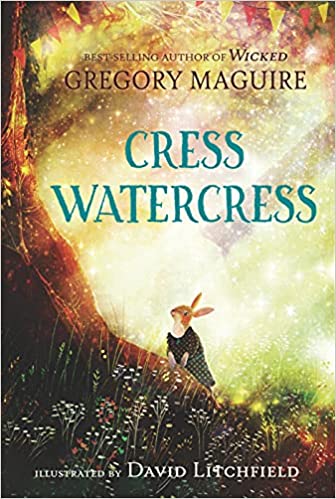
Add this rich and complex animal story to your third grade read-aloud books or share it with just the right student reader. A young rabbit must cope with his missing Papa and a big move to a new home. This is an instant classic.
Buy it: Cress Watercress on Amazon
What third grade books have you discovered recently? Come share in our We Are Teachers Helpline group on Facebook.
Want more articles like this be sure to subscribe to our newsletters . plus, check out our book lists for other elementary grade levels here:.
- Kindergarten Books
- First Grade Books
- Second Grade Books
- Fourth Grade Books

You Might Also Like
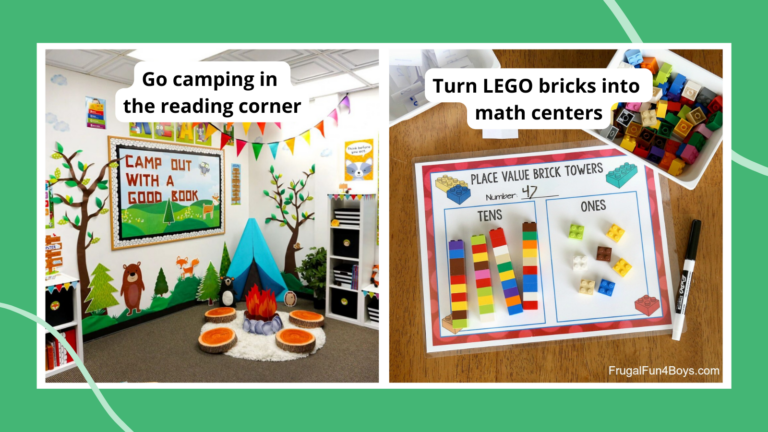
63 Tips, Tricks, and Ideas for Teaching 3rd Grade
Brilliant ideas from brilliant teachers (like you). Continue Reading
Copyright © 2024. All rights reserved. 5335 Gate Parkway, Jacksonville, FL 32256

15 of the Best Book Club Discussion Questions for Any Book
We’ve all been there. It’s time for book club and you need to find a list of book discussion questions for this month’s title so you start searching.
It can be a struggle to sort through all of the potential questions, especially if you are trying to find the right ones to ask children. A lot of the questions provided for children’s book clubs don’t encourage a thoughtful discussion with a variety of opinions.
But what if there was a better way?
What if there was a list of fifteen thought-provoking book discussion questions that you could use for any book title ?

Book Discussion Questions
These questions are written to guide you as you lead a great discussion about any book. Use them at home as you read with your kids or bring them to a book club meeting.
A few ideas to make your discussion more interesting:
- – Let your kids ask the questions – Download the printable , cut the questions into strips, and draw one out of a bag – Pass one out to each person randomly and discuss those questions – Number the questions on the printable from 1-15 and then ask the kids to pick a number 1-15
No matter how you ask the questions, have fun and enjoy a great discussion with your kids.
Grab the Printable:

Discussion Questions about the Opening
- 1. Did the story hook you right away? If not, what were your initial impressions? Did they change as you continued to read? Take a look back at the first chapter. Discuss what the author did to try to draw the reader into the story right away. Did it work in this case or not?
2. What was unique about the setting of the book? Did it enhance or take away from the story? Could this same story take place in a different location or time period? Discuss various alternate time periods and settings. Think about the ways they might have changed the story.
3. Would you like to live in the time period or setting of the book? Encourage kids to be specific about what they like or don’t like about the time period and/or setting. Have them consider how their lives would be the same or different.

Discussion Questions about The Characters
4. Do the characters seem convincing and believable? Can you relate to their lives and situations? Do any characters remind you of yourself or someone you know? This is a great opportunity for kids to relate the characters in the book to people they know.
5. How do characters change, grow or evolve throughout the course of the story? What causes these changes? Select a character and brainstorm a list of characteristics that describe the character at the start of the book then brainstorm characteristics that describe the same character at the end. Discuss the changes and what events lead to them.
6. If you had to create the movie version, who would play the lead roles? Don’t limit yourself to famous actors. You are welcome to cast family members, friends, and neighbors in your leading roles. You could also try to cast each person involved in the discussion in a role for the movie.

Discussion Questions about the Plot
7. Is the plot well-developed? believable? Do plot events unfold naturally or do they feel forced? Open this up to the entire book or look at a few specific events. Do some feel natural while some feel forced? Encourage everyone to share specifics.
8. Were there events that left you with unanswered questions? What do you still want to know about specific events or characters? Do you think that questions were left unanswered on purpose or were the answers just not just an important part of the plot?
9. What choices did the characters make that you agreed with? Are there times you would have made a different choice? Take a look at the significant and insignificant decisions that characters made. How do you think it would have changed the plot if the character had made a different choice.
10. Is there an event in the story that you would like to read from another character’s point of view? Sometimes books rotate the point of view to allow the reader insights into various character’s thoughts and feelings. That doesn’t always happen in a book though. Are there particular conversations or situations that you would have enjoyed reading someone else’s point of view? Why and why?
11. What was the climax? How did you feel at this point? (nervous, anxious, excited, disappointed…) This is a great opportunity to talk about the climax of a book. Everything has been building up to this point and it is often intense, though it doesn’t have to be. Discuss your feelings and thoughts about the climax.
12. Were you satisfied with the story ending? If you weren’t, how would you resolve things differently? This is a great opportunity to evaluate the conclusion. People typically have a lot of feelings and thoughts about the ending of a book. Are you left feeling satisfied or disappointed?
Discussion Questions about the Writing Style
13. What was unique about this author’s style of writing? Did you enjoy his/her style? Does the author use a casual, conversational writing style? Is there a lot of descriptive language? Did the author use a rotating point of view? What makes this author’s writing style unique? How does the style of this book compare to other books you have read?
14. Would you read another book by this author? Sometimes it is fun to go on an author reading binge if you enjoyed one of their books. Check out some of the author’s other book options and see if they look interesting to you.
15. Share your favorite passage or one that is particularly insightful, interesting, or silly. It’s always fun to hear the quotes that another reader found interesting or insightful. Share the reason you selected this particular quote. Record it in a book of quotes as well!
Grab a printable list of questions:
You might also enjoy:, over 50 engaging books for teens made into movies, 45 enjoyable children’s books made into movies, over 25 biographies that will inspire your middle school student.
- Latest Posts
- How to Support a Teen Slow Reader - April 25, 2024
- Manatee Summer Discussion Questions and Book Review - April 15, 2024
- Ten Best Children’s Poets Your Kids Will Love - April 11, 2024
Similar Posts

Homeschooling Teens: One Mom’s Transition
Save or Share:Nothing could have prepared me for the day that my little elementary homeschool grew up. Looking back, it feels like it happened overnight, but that isn’t really true. Changes began when my oldest entered middle school and they continued throughout that first year. There was a whole new level of resistance to schoolwork,…

Our Morning Basket: Geography Books for Kids
Save or Share:As we kick off our Geography studies this year, I have started gathering book titles for our Morning Basket. We will read some sort of Geography book daily because this year we are focusing on World Geography and World Cultures. Some days we will learn from informational text and other days we will…

Open Letter to my Children about the World of Text
Save or Share:FLASHBACK POST: This was originally published in 2014 on my former blog. My children were 11, 9, 7, and 5 years old at the time it was written. We continue to navigate the world of text together and it hasn’t been as scary as I thought. Dear Children, You are growing up so quickly. I have no doubt that I will blink and you will be…
Shakespeare Month: Weeks Two and Three Round-Up
Save or Share:It’s Shakespeare Month on my Facebook page. Week One was all about Shakespeare as a wordsmith which was such a fun topic. Weeks Two and Three were all about introducing our kids to the language and plays of Shakespeare. Come on over and join in the fun for week 4! About Latest Posts ConnectMary WilsonMary…

Begin a Jesse Tree Tradition
Save or Share:It is evening during the season of Advent. Our family gathers in the family room and plugs in a small, lighted tree. Hot drinks and yummy snacks serve to make this purposeful Advent tradition even more special. Someone reads the designated scripture passage and we discuss its meaning. After a brief discussion, an…

Six Hot Tea Flavors to Brew in Your Cup This Fall
Save or Share:I am a bit of a tea addict. If you know me, then you know that I am never without a cup of tea in my hand. I like my tea hot and I like my tea cold. They are both delicious. And while I am open to trying most any tea, I…
Leave a Reply Cancel reply
Your email address will not be published. Required fields are marked *
This site uses Akismet to reduce spam. Learn how your comment data is processed .
book review grade 3
All Formats
Resource types, all resource types.
- Rating Count
- Price (Ascending)
- Price (Descending)
- Most Recent
Book review grade 3

Daily Language Review , Grade 3 - Teacher's Edition, E- book
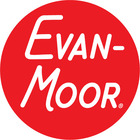
Ready As Can Be For Grade Three ! {A Second Grade Math Review Mini Book }

Book Report + Book Review (Novels) 4th-5th Grade - No Prep Writing Activities
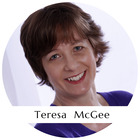
- Google Apps™
- Easel Activity

Fiction Book Review Flip Book for Grades 3 -6 Common Core Aligned

Book Review Opinion Writing: Grades 2, 3 ,4,5-Fun,Engaging, No Prep Lesson

Ready As Can Be For Grade Three ! {A Second Grade Language Review Mini Book }
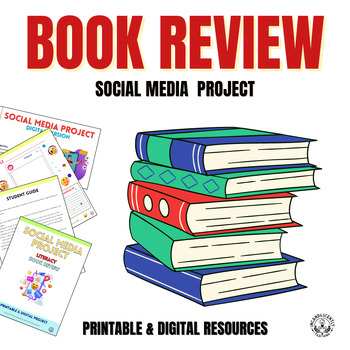
Book Review Social Media Project with Digital Resources, Grades 3 -12
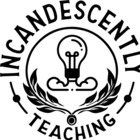
- Google Drive™ folder
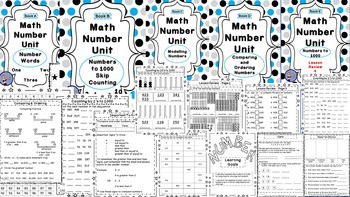
Math Number Unit BUNDLE- 5 Practice Books WITH Review and Assessments Grades 2- 3

The One and Only Ivan Book Review Aligned Novel Study by Katherine Applegate

Snowflake Bentley - Mentor Text and Mentor Sentence Lessons for Grades 3 -5
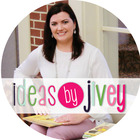
Enemy Pie - Mentor Text and Mentor Sentence Lessons for grades 3 -5
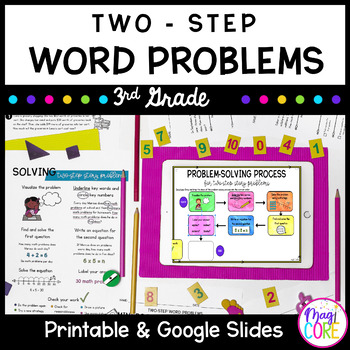
Two Step Word Problems All Operations 3rd Grade Math 3 .OA.D.8 Worksheet Activity
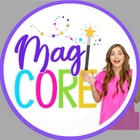
Wonder Aligned Novel Study R.J. Palacio Book Review Activities Literature Circle
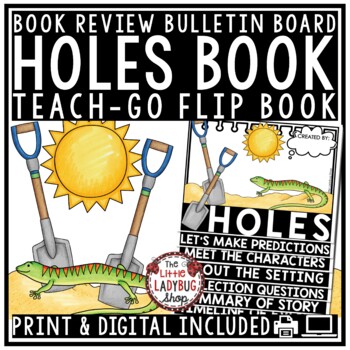
Holes, Louis Sacher Novel Study Book Review Report Aligned Literature Circles

4th Grade Summer Math Practice Packet Getting Ready for 5th Grade Spiral Review
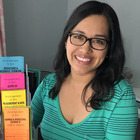
Stone Fox Aligned Novel Study Book Club Book Review Report Literature Circle
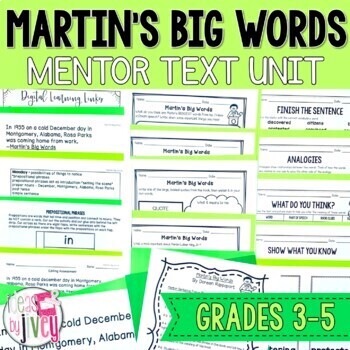
Martin's Big Words - Mentor Text and Mentor Sentence Lessons for Grades 3 -5
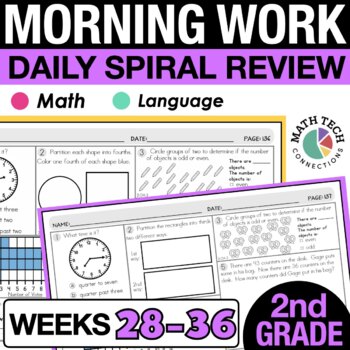
2nd Grade Summer Math Practice Packet Getting Ready for 3rd Grade Spiral Review
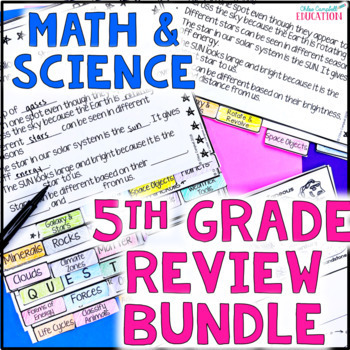
Science & Math Standardized Test Prep 5th Grade Review Packets Flip Books BUNDLE
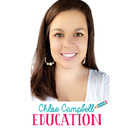
Wonders of Learning - Unit 3 , Week 6 REVIEW

Grade 3 Writing Checklists - Opinion, Narrative, Procedural, Peer Editing, Etc.
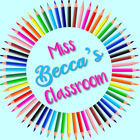
Because of Winn Dixie Aligned Novel Study Book Review Report Template
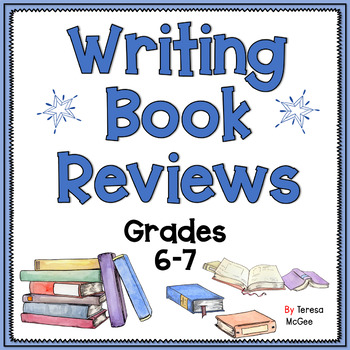
Writing Book Reviews (Novels) + Crossword: No Prep Writing Activities Grade 6-7
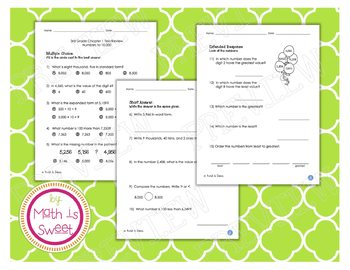
Math In Focus - Grade 3 - Chapter 1 (Numbers to 10,000) Review /Test
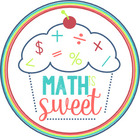
- We're hiring
- Help & FAQ
- Privacy policy
- Student privacy
- Terms of service
- Tell us what you think
If you're seeing this message, it means we're having trouble loading external resources on our website.
If you're behind a web filter, please make sure that the domains *.kastatic.org and *.kasandbox.org are unblocked.
To log in and use all the features of Khan Academy, please enable JavaScript in your browser.
Unit 1: Intro to multiplication
Unit 2: 1-digit multiplication, unit 3: addition, subtraction, and estimation, unit 4: intro to division, unit 5: understand fractions, unit 6: equivalent fractions and comparing fractions, unit 7: more with multiplication and division, unit 8: arithmetic patterns and problem solving, unit 9: quadrilaterals, unit 10: area, unit 11: perimeter, unit 12: time, unit 13: measurement, unit 14: represent and interpret data.

Books For Third Grade Readers
Everything you need to know to support your third-grade reader..
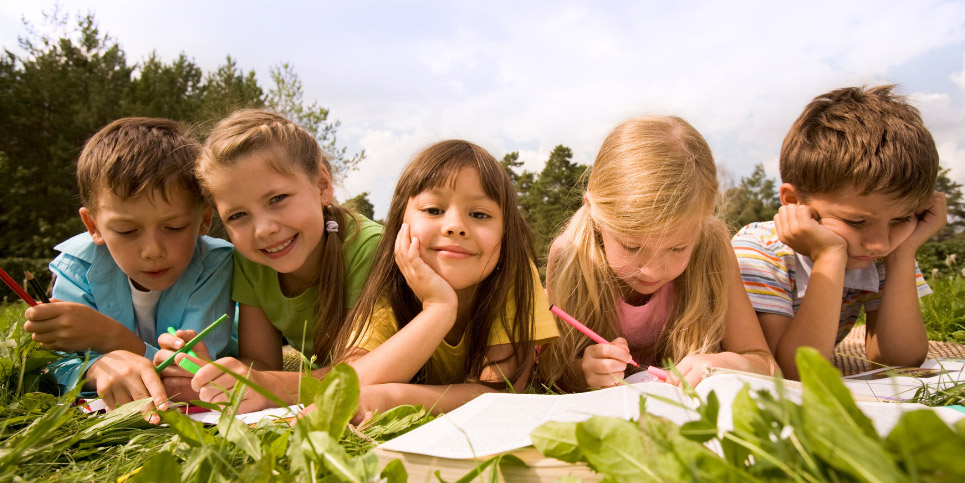
If you have been watching your child’s reading progress with eager anticipation since that first touch-and-feel baby book , then the third-grade reading level* is a time to get really excited. While readers at first – and second-grade levels are, for the most part, still learning the fundamentals of reading, the third-grade level is when readers tend to start finding their reading wings . From greater reading confidence and ability to a sense of independence in the topics and genres they choose, readers at the third-grade level are busy developing more complex reading skills at this stage in reading development.
More broadly, the third-grade level is a transitional period in which readers build the skills they will need to tackle more complex educational tasks; readers at this level are transitioning from learning to read to reading to learn. Much of a reader’s later academic success will depend on the skills developed at this critical stage. In this article, we’ll outline key skills to look out for and support, as well as some of the choices you can turn to support your reader’s fledgling independence.
Remember that not every child develops reading skills (or any skill, for that matter) at the same pace, and children of the same age may have widely varying reading levels. A child in third grade will not necessarily be reading at a third-grade reading level—they may be reading at a first – or second-grade reading level or a fourth- or fifth-grade reading level or above.
Supporting A Third-Grade-Level Reader’s Growing Confidence and Reading Ability
Your third-grade level reader is probably reading at least some texts independently and has developed a good-enough command of language to be able to appreciate plot and meaning. According to the common core standards, a reader at this level should be reading some multi-syllable and irregularly spelled words, self-correct mistakes, and answer text-specific questions. Developing these skills means that they are ready for more challenging reading tasks.
To help your third-grade level readers progress at this stage, encourage them to branch out and explore new authors, genres, topics, and writing styles. Provide reading-related tasks and questions that help them understand non-literal expressions, such as metaphors, and encourage them to express opinions, make comparisons, and talk about books.
This stage is also the right one to start introducing supporting skills , such as looking up unfamiliar words, judging the quality of a book, and understanding context. Show your reader how to use tools like dictionaries and search engines, encourage them to articulate the strengths and weaknesses of a book, and urge them to research authors’ lives and the historical periods in which different books were written.
Finally, as your reader develops more complex reading skills, you will want to be on the lookout for emerging reading disabilities. Research suggests that intervention received at the second-and third-grade readings levels is much more effective than that delivered at a later stage.
Choosing Books by Subject Matter to Support Developing Third-Grade Reading Skills
As already mentioned, the third-grade level is the ideal time to start exploring new things. There are several areas worth exploring as you help your reader choose exciting new books.
Historical fiction can be a great way to help your reader flex their comprehension muscles and explore context simultaneously. Ellen Levine’s Henry’s Freedom Box , Yona Zeldis McDonough’s The Bicycle Spy , and Patricia Polacco’s Fiona’s Lace are great choices.
If you are homeschooling, classic fiction—think Pippi Longstocking , Roald Dahl novels, or fairy tales —are a great option because so many supporting educational materials are freely available.
While many readers will gravitate to fiction, it is also worth remembering that fantastic non-fiction options are available for this age group. Look for biographies , like Joseph Bruchac’s A Boy Called Slow or Ann McGovern’s The Secret Soldier , or informational texts— National Geographic has offerings on just about every subject under the sun, from dinosaurs to soccer.
Choosing Genres and Forms to Support a Wide Range of Interests and Literacy Skills
The third-grade level also opens up a range of new forms and genres of text for your reader to enjoy. Series books can offer a sense of familiarity and security and are an excellent choice for reluctant readers (although they pose a risk to variety and breadth of reading matter). Captain Underpants , How to Train Your Dragon , and Wayside School are all popular choices, with enough substance to challenge as well as entertain.
Don’t forget to include some poetry: Roald Dahl’s Revolting Rhymes , books by Shel Silverstein , and Dr. Seuss ‘s stories are all great choices.
Readers at this level can also branch out from the written word to other forms of reading: magazines, audiobooks , and graphic novels can all be fantastic ways to introduce your reader to new ideas and develop broader forms of literacy. For example, the Adventures in Cartooning series by James Sturm will help readers build their drawing and writing skills as well as visual literacy, and magazines like MotoKids , Little Player , and Young Rider can help your reader build literacy skills while indulging in specialist interests.
Supporting Diversity and Inclusion in Book Choices for Third-Grade Readers
Readers’ burgeoning critical thinking skills at this level make this an ideal stage for deeper exploration of social issues , including diversity and inclusion . There are many excellent books for readers at this level, from non-fiction books on advocacy , history books , and biographies to historical and contemporary fiction.
For example, Todd Kortemeier’s Unsung Heroes of Social Justice introduces readers to some of the less well-known heroes of social justice movements through time. Kaelyn Rich’s Girls Resist! provides a practical guide to advocacy and protest for young women (although the advice is equally relevant to other ages and genders). Cece Bell’s El Deafo , Ruby Bridges and Margo Lundell’s Through My Eyes , and Allen Say’s Grandfather’s Journey are all examples of powerful texts that celebrate diversity for this reading level.
Check Out Some of the Best Books for Third Graders
- 5 Gorgeous Animal Adventure Novels for Kids
- 4 African American Biography Books for Kids
- I Survived Graphic Novel Series Review
- 10 Outstanding Poetry Books for Kids
- 5 Excellent Audiobooks for Kids Ages 8 and Up
BOOKS FOR THIRD GRADE READERS
- The Legendary Mo Seto, by A.Y. Chan | Dedicated Review
The Legendary Mo Seto is a touching but action-packed coming-of-age tale, perfect for readers who love action, mystery, and immersion in a good fight scene.
- An Interview with A. Y. Chan, Creator of ‘The Legendary Mo Seto’
In this captivating interview, A. Y. Chan, the author of The Legendary Mo Seto, shares insights into the inspiration behind her debut novel.
- Daisy’s Near CATastrophe | Dedicated Review
Daisy’s Near CATastrophe is a sweet and inspiring story, perfect for pet lovers and for sparking conversations about bravery and self-belief.
The Magic Sea Turtle, by Kathleen Welton | Awareness Tour
Join us on a virtual book tour for the enchanting picture book The Magic Sea Turtle by Kathleen Welton, illustrated by Chau Pham.
- The Magic Sea Turtle, by Kathleen Welton | Dedicated Review
The Magic Sea Turtle is a story about learning how to grow and benefit from adversity. Change comes to everyone, but it can be a scary prospect.
A Tall Tale: How the Ostriches Got Their Long Necks and Long Legs | Dedicated Review
A Tall Tale: How the Ostriches Got Their Long Necks and Long Legs is a humorous and energetic fable, sure to appeal to family audiences.
TCBR Supporter
Recent articles.
- The Legendary Mo Seto, by A.Y. Chan | Book Giveaway
TCBR Supporters
Type above and press Enter to search. Press Esc to cancel.

Reading & Math for K-5
- Kindergarten
- Learning numbers
- Comparing numbers
- Place Value
- Roman numerals
Subtraction
Multiplication
- Order of operations
- Drills & practice
Measurement
- Factoring & prime factors
- Proportions
- Shape & geometry
- Data & graphing
- Word problems
- Children's stories
- Leveled Stories
- Context clues
- Cause & effect
- Compare & contrast
- Fact vs. fiction
- Fact vs. opinion
- Main idea & details
- Story elements
- Conclusions & inferences
- Sounds & phonics
- Words & vocabulary
- Reading comprehension
- Early writing
- Numbers & counting
- Simple math
- Social skills
- Other activities
- Dolch sight words
- Fry sight words
- Multiple meaning words
- Prefixes & suffixes
- Vocabulary cards
- Other parts of speech
- Punctuation
- Capitalization
- Narrative writing
- Opinion writing
- Informative writing
- Cursive alphabet
- Cursive letters
- Cursive letter joins
- Cursive words
- Cursive sentences
- Cursive passages
- Grammar & Writing
Breadcrumbs

Download & Print From only $3.10
Third Grade Math Worksheets
Free grade 3 math worksheets.
Our third grade math worksheets support numeracy development and introduce division, decimals, roman numerals, calendars and concepts in measurement and geometry. Our word problem worksheets review skills in real world scenarios.
Choose your grade 3 topic:
Place Value and Rounding
Order of Operations
Roman Numerals
Fractions and Decimals
Counting Money
Time & Calendar
Data & Graphing
Word Problems

Sample Grade 3 Math Worksheet
What is K5?
K5 Learning offers free worksheets , flashcards and inexpensive workbooks for kids in kindergarten to grade 5. Become a member to access additional content and skip ads.

Our members helped us give away millions of worksheets last year.
We provide free educational materials to parents and teachers in over 100 countries. If you can, please consider purchasing a membership ($24/year) to support our efforts.
Members skip ads and access exclusive features.
Learn about member benefits
This content is available to members only.
Join K5 to save time, skip ads and access more content. Learn More
- Forgot Password?
How to Write a Book Review: A Comprehensive Tutorial With Examples

You don’t need to be a literary expert to craft captivating book reviews. With one in every three readers selecting books based on insightful reviews, your opinions can guide fellow bibliophiles toward their next literary adventure.
Learning how to write a book review will not only help you excel at your assigned tasks, but you’ll also contribute valuable insights to the book-loving community and turn your passion into a professional pursuit.
In this comprehensive guide, PaperPerk will walk you through a few simple steps to master the art of writing book reviews so you can confidently embark on this rewarding journey.
What is a Book Review?
A book review is a critical evaluation of a book, offering insights into its content, quality, and impact. It helps readers make informed decisions about whether to read the book.
Writing a book review as an assignment benefits students in multiple ways. Firstly, it teaches them how to write a book review by developing their analytical skills as they evaluate the content, themes, and writing style .
Secondly, it enhances their ability to express opinions and provide constructive criticism. Additionally, book review assignments expose students to various publications and genres, broadening their knowledge.
Furthermore, these tasks foster essential skills for academic success, like critical thinking and the ability to synthesize information. By now, we’re sure you want to learn how to write a book review, so let’s look at the book review template first.
Table of Contents
Book Review Template
How to write a book review- a step by step guide.
Check out these 5 straightforward steps for composing the best book review.
Step 1: Planning Your Book Review – The Art of Getting Started
You’ve decided to take the plunge and share your thoughts on a book that has captivated (or perhaps disappointed) you. Before you start book reviewing, let’s take a step back and plan your approach. Since knowing how to write a book review that’s both informative and engaging is an art in itself.
Choosing Your Literature
First things first, pick the book you want to review. This might seem like a no-brainer, but selecting a book that genuinely interests you will make the review process more enjoyable and your insights more authentic.
Crafting the Master Plan
Next, create an outline that covers all the essential points you want to discuss in your review. This will serve as the roadmap for your writing journey.
The Devil is in the Details
As you read, note any information that stands out, whether it overwhelms, underwhelms, or simply intrigues you. Pay attention to:
- The characters and their development
- The plot and its intricacies
- Any themes, symbols, or motifs you find noteworthy
Remember to reserve a body paragraph for each point you want to discuss.
The Key Questions to Ponder
When planning your book review, consider the following questions:
- What’s the plot (if any)? Understanding the driving force behind the book will help you craft a more effective review.
- Is the plot interesting? Did the book hold your attention and keep you turning the pages?
- Are the writing techniques effective? Does the author’s style captivate you, making you want to read (or reread) the text?
- Are the characters or the information believable? Do the characters/plot/information feel real, and can you relate to them?
- Would you recommend the book to anyone? Consider if the book is worthy of being recommended, whether to impress someone or to support a point in a literature class.
- What could improve? Always keep an eye out for areas that could be improved. Providing constructive criticism can enhance the quality of literature.
Step 2 – Crafting the Perfect Introduction to Write a Book Review
In this second step of “how to write a book review,” we’re focusing on the art of creating a powerful opening that will hook your audience and set the stage for your analysis.
Identify Your Book and Author
Begin by mentioning the book you’ve chosen, including its title and the author’s name. This informs your readers and establishes the subject of your review.
Ponder the Title
Next, discuss the mental images or emotions the book’s title evokes in your mind . This helps your readers understand your initial feelings and expectations before diving into the book.
Judge the Book by Its Cover (Just a Little)
Take a moment to talk about the book’s cover. Did it intrigue you? Did it hint at what to expect from the story or the author’s writing style? Sharing your thoughts on the cover can offer a unique perspective on how the book presents itself to potential readers.
Present Your Thesis
Now it’s time to introduce your thesis. This statement should be a concise and insightful summary of your opinion of the book. For example:
“Normal People” by Sally Rooney is a captivating portrayal of the complexities of human relationships, exploring themes of love, class, and self-discovery with exceptional depth and authenticity.
Ensure that your thesis is relevant to the points or quotes you plan to discuss throughout your review.
Incorporating these elements into your introduction will create a strong foundation for your book review. Your readers will be eager to learn more about your thoughts and insights on the book, setting the stage for a compelling and thought-provoking analysis.
How to Write a Book Review: Step 3 – Building Brilliant Body Paragraphs
You’ve planned your review and written an attention-grabbing introduction. Now it’s time for the main event: crafting the body paragraphs of your book review. In this step of “how to write a book review,” we’ll explore the art of constructing engaging and insightful body paragraphs that will keep your readers hooked.
Summarize Without Spoilers
Begin by summarizing a specific section of the book, not revealing any major plot twists or spoilers. Your goal is to give your readers a taste of the story without ruining surprises.
Support Your Viewpoint with Quotes
Next, choose three quotes from the book that support your viewpoint or opinion. These quotes should be relevant to the section you’re summarizing and help illustrate your thoughts on the book.
Analyze the Quotes
Write a summary of each quote in your own words, explaining how it made you feel or what it led you to think about the book or the author’s writing. This analysis should provide insight into your perspective and demonstrate your understanding of the text.
Structure Your Body Paragraphs
Dedicate one body paragraph to each quote, ensuring your writing is well-connected, coherent, and easy to understand.
For example:
- In Jane Eyre , Charlotte Brontë writes, “I am no bird; and no net ensnares me.” This powerful statement highlights Jane’s fierce independence and refusal to be trapped by societal expectations.
- In Normal People , Sally Rooney explores the complexities of love and friendship when she writes, “It was culture as class performance, literature fetishized for its ability to take educated people on false emotional journeys.” This quote reveals the author’s astute observations on the role of culture and class in shaping personal relationships.
- In Wuthering Heights , Emily Brontë captures the tumultuous nature of love with the quote, “He’s more myself than I am. Whatever our souls are made of, his and mine are the same.” This poignant line emphasizes the deep, unbreakable bond between the story’s central characters.
By following these guidelines, you’ll create body paragraphs that are both captivating and insightful, enhancing your book review and providing your readers with a deeper understanding of the literary work.
How to Write a Book Review: Step 4 – Crafting a Captivating Conclusion
You’ve navigated through planning, introductions, and body paragraphs with finesse. Now it’s time to wrap up your book review with a conclusion that leaves a lasting impression . In this final step of “how to write a book review,” we’ll explore the art of writing a memorable and persuasive conclusion.
Summarize Your Analysis
Begin by summarizing the key points you’ve presented in the body paragraphs. This helps to remind your readers of the insights and arguments you’ve shared throughout your review.
Offer Your Final Conclusion
Next, provide a conclusion that reflects your overall feelings about the book. This is your chance to leave a lasting impression and persuade your readers to consider your perspective.
Address the Book’s Appeal
Now, answer the question: Is this book worth reading? Be clear about who would enjoy the book and who might not. Discuss the taste preferences and circumstances that make the book more appealing to some readers than others.
For example: The Alchemist is a book that can enchant a young teen, but those who are already well-versed in classic literature might find it less engaging.
Be Subtle and Balanced
Avoid simply stating whether you “liked” or “disliked” the book. Instead, use nuanced language to convey your message. Highlight the pros and cons of reading the type of literature you’ve reviewed, offering a balanced perspective.
Bringing It All Together
By following these guidelines, you’ll craft a conclusion that leaves your readers with a clear understanding of your thoughts and opinions on the book. Your review will be a valuable resource for those considering whether to pick up the book, and your witty and insightful analysis will make your review a pleasure to read. So conquer the world of book reviews, one captivating conclusion at a time!
How to Write a Book Review: Step 5 – Rating the Book (Optional)
You’ve masterfully crafted your book review, from the introduction to the conclusion. But wait, there’s one more step you might consider before calling it a day: rating the book. In this optional step of “how to write a book review,” we’ll explore the benefits and methods of assigning a rating to the book you’ve reviewed.
Why Rate the Book?
Sometimes, when writing a professional book review, it may not be appropriate to state whether you liked or disliked the book. In such cases, assigning a rating can be an effective way to get your message across without explicitly sharing your personal opinion.
How to Rate the Book
There are various rating systems you can use to evaluate the book, such as:
- A star rating (e.g., 1 to 5 stars)
- A numerical score (e.g., 1 to 10)
- A letter grade (e.g., A+ to F)
Choose a rating system that best suits your style and the format of your review. Be consistent in your rating criteria, considering writing quality, character development, plot, and overall enjoyment.
Tips for Rating the Book
Here are some tips for rating the book effectively:
- Be honest: Your rating should reflect your true feelings about the book. Don’t inflate or deflate your rating based on external factors, such as the book’s popularity or the author’s reputation.
- Be fair:Consider the book’s merits and shortcomings when rating. Even if you didn’t enjoy the book, recognize its strengths and acknowledge them in your rating.
- Be clear: Explain the rationale behind your rating so your readers understand the factors that influenced your evaluation.
Wrapping Up
By including a rating in your book review, you provide your readers with an additional insight into your thoughts on the book. While this step is optional, it can be a valuable tool for conveying your message subtly yet effectively. So, rate those books confidently, adding a touch of wit and wisdom to your book reviews.
Additional Tips on How to Write a Book Review: A Guide
In this segment, we’ll explore additional tips on how to write a book review. Get ready to captivate your readers and make your review a memorable one!
Hook ’em with an Intriguing Introduction
Keep your introduction precise and to the point. Readers have the attention span of a goldfish these days, so don’t let them swim away in boredom. Start with a bang and keep them hooked!
Embrace the World of Fiction
When learning how to write a book review, remember that reviewing fiction is often more engaging and effective. If your professor hasn’t assigned you a specific book, dive into the realm of fiction and select a novel that piques your interest.
Opinionated with Gusto
Don’t shy away from adding your own opinion to your review. A good book review always features the writer’s viewpoint and constructive criticism. After all, your readers want to know what you think!
Express Your Love (or Lack Thereof)
If you adored the book, let your readers know! Use phrases like “I’ll definitely return to this book again” to convey your enthusiasm. Conversely, be honest but respectful even if the book wasn’t your cup of tea.
Templates and Examples and Expert Help: Your Trusty Sidekicks
Feeling lost? You can always get help from formats, book review examples or online college paper writing service platforms. These trusty sidekicks will help you navigate the world of book reviews with ease.
Be a Champion for New Writers and Literature
Remember to uplift new writers and pieces of literature. If you want to suggest improvements, do so kindly and constructively. There’s no need to be mean about anyone’s books – we’re all in this literary adventure together!
Criticize with Clarity, Not Cruelty
When adding criticism to your review, be clear but not mean. Remember, there’s a fine line between constructive criticism and cruelty. Tread lightly and keep your reader’s feelings in mind.
Avoid the Comparison Trap
Resist the urge to compare one writer’s book with another. Every book holds its worth, and comparing them will only confuse your reader. Stick to discussing the book at hand, and let it shine in its own light.
Top 7 Mistakes and How to Avoid Them
Writing a book review can be a delightful and rewarding experience, especially when you balance analysis, wit, and personal insights. However, some common mistakes can kill the brilliance of your review.
In this section of “how to write a book review,” we’ll explore the top 7 blunders writers commit and how to steer clear of them, with a dash of modernist literature examples and tips for students writing book reviews as assignments.
Succumbing to the Lure of Plot Summaries
Mistake: Diving headfirst into a plot summary instead of dissecting the book’s themes, characters, and writing style.
Example: “The Bell Jar chronicles the life of a young woman who experiences a mental breakdown.”
How to Avoid: Delve into the book’s deeper aspects, such as its portrayal of mental health, societal expectations, and the author’s distinctive narrative voice. Offer thoughtful insights and reflections, making your review a treasure trove of analysis.
Unleashing the Spoiler Kraken
Mistake: Spilling major plot twists or the ending without providing a spoiler warning, effectively ruining the reading experience for potential readers.
Example: “In Metamorphosis, the protagonist’s transformation into a monstrous insect leads to…”
How to Avoid: Tread carefully when discussing significant plot developments, and consider using spoiler warnings. Focus on the impact of these plot points on the overall narrative, character growth, or thematic resonance.
Riding the Personal Bias Express
Mistake: Allowing personal bias to hijack the review without providing sufficient evidence or reasoning to support opinions.
Example: “I detest books about existential crises, so The Sun Also Rises was a snoozefest.”
How to Avoid: While personal opinions are valid, it’s crucial to back them up with specific examples from the book. Discuss aspects like writing style, character development, or pacing to support your evaluation and provide a more balanced perspective.
Wielding the Vague Language Saber
Mistake: Resorting to generic, vague language that fails to capture the nuances of the book and can come across as clichéd.
Example: “This book was mind-blowing. It’s a must-read for everyone.”
How to Avoid: Use precise and descriptive language to express your thoughts. Employ specific examples and quotations to highlight memorable scenes, the author’s unique writing style, or the impact of the book’s themes on readers.
Ignoring the Contextualization Compass
Mistake: Neglecting to provide context about the author, genre, or cultural relevance of the book, leaving readers without a proper frame of reference.
Example: “This book is dull and unoriginal.”
How to Avoid: Offer readers a broader understanding by discussing the author’s background, the genre conventions the book adheres to or subverts, and any societal or historical contexts that inform the narrative. This helps readers appreciate the book’s uniqueness and relevance.
Overindulging in Personal Preferences
Mistake: Letting personal preferences overshadow an objective assessment of the book’s merits.
Example: “I don’t like stream-of-consciousness writing, so this book is automatically bad.”
How to Avoid: Acknowledge personal preferences but strive to evaluate the book objectively. Focus on the book’s strengths and weaknesses, considering how well it achieves its goals within its genre or intended audience.
Forgetting the Target Audience Telescope
Mistake: Failing to mention the book’s target audience or who might enjoy it, leading to confusion for potential readers.
Example: “This book is great for everyone.”
How to Avoid: Contemplate the book’s intended audience, genre, and themes. Mention who might particularly enjoy the book based on these factors, whether it’s fans of a specific genre, readers interested in character-driven stories, or those seeking thought-provoking narratives.
By dodging these common pitfalls, writers can craft insightful, balanced, and engaging book reviews that help readers make informed decisions about their reading choices.
These tips are particularly beneficial for students writing book reviews as assignments, as they ensure a well-rounded and thoughtful analysis.!
Many students requested us to cover how to write a book review. This thorough guide is sure to help you. At Paperperk, professionals are dedicated to helping students find their balance. We understand the importance of good grades, so we offer the finest writing service , ensuring students stay ahead of the curve. So seek expert help because only Paperperk is your perfect solution!
What is the difference between a book review and a report?
Who is the target audience for book reviews and book reports, how do book reviews and reports differ in length and content, can i write professional book reviews, what are the key aspects of writing professional book reviews, how can i enhance my book-reviewing skills to write professional reviews, what should be included in a good book review.
Order Original Papers & Essays
Your First Custom Paper Sample is on Us!
Timely Deliveries
No Plagiarism & AI
100% Refund
Try Our Free Paper Writing Service
Related blogs.

Connections with Writers and support
Privacy and Confidentiality Guarantee
Average Quality Score
Common Sense Media
Movie & TV reviews for parents
- For Parents
- For Educators
- Our Work and Impact
Or browse by category:
- Get the app
- Movie Reviews
- Best Movie Lists
- Best Movies on Netflix, Disney+, and More
Common Sense Selections for Movies

50 Modern Movies All Kids Should Watch Before They're 12

- Best TV Lists
- Best TV Shows on Netflix, Disney+, and More
- Common Sense Selections for TV
- Video Reviews of TV Shows

Best Kids' Shows on Disney+

Best Kids' TV Shows on Netflix
- Book Reviews
- Best Book Lists
- Common Sense Selections for Books

8 Tips for Getting Kids Hooked on Books

50 Books All Kids Should Read Before They're 12
- Game Reviews
- Best Game Lists
Common Sense Selections for Games
- Video Reviews of Games

Nintendo Switch Games for Family Fun

- Podcast Reviews
- Best Podcast Lists
Common Sense Selections for Podcasts

Parents' Guide to Podcasts

- App Reviews
- Best App Lists

Social Networking for Teens

Gun-Free Action Game Apps

Reviews for AI Apps and Tools
- YouTube Channel Reviews
- YouTube Kids Channels by Topic

Parents' Ultimate Guide to YouTube Kids

YouTube Kids Channels for Gamers
- Preschoolers (2-4)
- Little Kids (5-7)
- Big Kids (8-9)
- Pre-Teens (10-12)
- Teens (13+)
- Screen Time
- Social Media
- Online Safety
- Identity and Community

Real-Life Heroes on YouTube for Tweens and Teens
- Family Tech Planners
- Digital Skills
- All Articles
- Latino Culture
- Black Voices
- Asian Stories
- Native Narratives
- LGBTQ+ Pride
- Best of Diverse Representation List

Celebrating Black History Month

Movies and TV Shows with Arab Leads

Celebrate Hip-Hop's 50th Anniversary
Ratings and reviews parents trust.

The Garfield Movie
Legendary cat's animated adventure has peril, lots of ads.

Poignant fantasy about loss and the power of imagination.

Sex, nudity, smoking in sumptuous, diverse period drama.

Maxton Hall: The World Between Us
Indulgent romp doesn't skimp on shirtless boys, drinking.

Our Editors Recommend

Movies & TV That Applaud Asian, Asian American, Native Hawaiian, and Pacific Islander Heroes & Competitors
Inspire your family with these stories of bravery and persistence.

Stories Set in Asia and the Pacific Islands
Explore the many countries and cultures that call Asia and the Pacific home.

Bollywood Movies
Discover some of the best of Bollywood with these movies.

Common Sense Selections

Robot Dreams

Jurassic World: Chaos Theory

Secrets of the Octopus

Stax: Soulsville U.S.A.
Popular with parents.

52 parent reviews
"Best kids movie I’ve seen in years."
6 parent reviews

The Fall Guy
11 parent reviews
28 parent reviews

Know you're making the best possible choices for your kids.
Since 2003, Common Sense has been the leading independent source for media recommendations and advice for families.
Wherever your family likes to stream or shop, we're here for you.
Look for us next time you're searching for something to watch, read, or play.

Not-for-profit partnerships, generous foundation support, and contributions from parents like you keep Common Sense free and available to families everywhere.

IMAGES
VIDEO
COMMENTS
3rd Grade Book Report. Whether you are a parent, teacher, or homeschooler - you will love these no prep book report templates for children in grade 2, grade 3, grade 4, and grade 5 students. Children need to practice writing and summarizing the major parts of the book, and ensuring they understand what they are reading, but staring at a blank page isn't going to help your early reader succeed!
Book Review Questions: Conclusion. Make sure to wrap up your book review with some final reflections about who should read this book, what you learnt from it and what other books it is similar to. If a reader sees that a book is similar to one they have already read and loved then that's a great indication that they'll love this one too ...
This teacher-made Nonfiction Reading Report Booklet invites kids to write in-depth reports on factual books. It includes 12 pages of reading comprehension, writing, and vocabulary tasks to reinforce students' understanding. We also have a Fictional Books version, whereby getting your students to answer questions that revolve around the plot ...
Examples: Learn from the efforts of others. Learning how to write strong reviews takes time and not a little effort. Reading the reviews others have done can help you get a feel for the flow and flavor of reviews. This book was about a bird who didn't yet know how to fly. The bird has to decide if it will try to fly, but it was not sure if it ...
All Grades K-5 All Grades 6-12 PreK 6th Grade Kindergarten 7th Grade 1st Grade 8th Grade 2nd Grade 9th Grade 3rd Grade 10th Grade 4th Grade 11th Grade 5th ... Printables for Grades 3-5 for Fiction or Nonfiction Books. Take a new spin on your book report assignment. 📚😍 ... from designing a comic to creating a playlist or writing interview ...
9. Flora & Ulysses by Kate DiCamillo. My list wouldn't be complete without a graphic novel, and Flora & Ulysses is the perfect graphic novel for your third graders. Written by award-winning author Kate DiCamillo, this is the story of the many zany adventures of a superhero squirrel and the girl who saved him.
A general guideline is that the longer the book, the longer the review, and a review shouldn't be fewer than 100 words or so. For a long book, the review may be 500 words or even more. If a review is too short, the review may not be able to fulfill its purpose. Too long, and the review may stray into too much plot summary or lose the reader's ...
K5 Learning offers free worksheets, flashcards and inexpensive workbooks for kids in kindergarten to grade 5. Become a member to access additional content and skip ads. Students are prompted to write an opinion piece or a review about a book they read recently.
Curated specifically for third grade classrooms, this book list spans a wide range of reading levels and can be used in both group and independent reading sessions. Plus, build a diverse classroom library with hand-picked collections, including sets like the Best New Books Grade 3 2022-2023 and Equity and Inclusion Grades 3-5, and keep students ...
This is a FREE PDF download for Book Review / Book Report Templates. There are 10 differentiated options perfect for lower grades (K-3). Use it as a writing or reading project, book review, or book report. It can also be used as a reading center follow-up, for Daily 5 centers, Literacy Centers, Independent Centers, or Listen to Reading.
The real value of crafting a well-written book review for a student does not lie in their ability to impact book sales. Understanding how to produce a well-written book review helps students to: Engage critically with a text. Critically evaluate a text. Respond personally to a range of different writing genres.
Download. Title - Name of the book; Author/Illustrator - Name of the Author and/or Illustrator of the book; Word difficulty - They need to predict the difficulty level they had while reading the book. For Example, Too easy, Just right, Medium, Too hard, Did your like the book/Rating - This is to rate the book. As it is for kids, it can be represented with the STAR rating.
enjoyed the book). The review will appeal to most readers, however, the voice could be stronger. The review appeals to readers somewhat. The review does not appeal to most readers. Opinion/Supporting Details Student rating____ Teacher rating____ My review has a strong opinion that is supported by 2-3 details (good or bad). My review has a
46. The First Cat in Space Ate Pizza by Mac Barnett. Amazon. Your collection of third grade books should definitely include a hysterical crowd-pleaser like this one. A cat launches a space expedition to save the moon from hungry rats. It's weird and adventurous and sure to be passed all around the class.
FSA ELA Reading Practice Test Questions Read the passage and then answer Numbers 16 through 18. There are three underlined words or phrases in the passage to show which word or phrase may be incorrect. 1064. Picture a bear in a fuzzy, warm sweater. Imagine a squirrel that worn a pair of thick socks.
- Download the printable, cut the questions into strips, and draw one out of a bag - Pass one out to each person randomly and discuss those questions - Number the questions on the printable from 1-15 and then ask the kids to pick a number 1-15; No matter how you ask the questions, have fun and enjoy a great discussion with your kids.
Free children's stories for third grade. Each passages isfollowed by 6 questions. These fiction and non-fiction texts are 350-450 words long. Fables. These historical passages and fables are followed by comprehension questions. Exercises involve recalling information directly from the text as well as concepts such as prediction, inference and ...
Browse book review grade 3 resources on Teachers Pay Teachers, a marketplace trusted by millions of teachers for original educational resources. Browse Catalog. Grades. Pre-K - K; 1 - 2; 3 - 5; ... This download includes 3 different Book Review style worksheets for grades 3, 4 and 5. These can also be used for differentiating in the classroom.
Unit 3: Addition, subtraction, and estimation. 0/1600 Mastery points. Rounding to nearest 10 or 100 Estimate to add multi-digit numbers Strategies for adding two and three-digit numbers Adding with regrouping within 1000. Estimate to subtract multi-digit numbers Strategies for subtracting two and three-digit numbers Subtracting with regrouping ...
To help your third-grade level readers progress at this stage, encourage them to branch out and explore new authors, genres, topics, and writing styles. Provide reading-related tasks and questions that help them understand non-literal expressions, such as metaphors, and encourage them to express opinions, make comparisons, and talk about books.
Free grade 3 math worksheets. Our third grade math worksheets support numeracy development and introduce division, decimals, roman numerals, calendars and concepts in measurement and geometry. Our word problem worksheets review skills in real world scenarios. Choose your grade 3 topic:
Bridge Patterns. Bridges in Mathematics Grade 3 Student Book. Unit 1: Addition & Subtraction Patterns. Summer Vacation Survey, Part 1. Summer Vacation Survey, Part 2. Story Problems. Addition Table. Addition Fact Practice. Work Place Instructions 1A Make the Sum.
Step 1: Planning Your Book Review - The Art of Getting Started. You've decided to take the plunge and share your thoughts on a book that has captivated (or perhaps disappointed) you. Before you start book reviewing, let's take a step back and plan your approach.
Common Sense is the nation's leading nonprofit organization dedicated to improving the lives of all kids and families by providing the trustworthy information, education, and independent voice they need to thrive in the 21st century. Common Sense Media is the leading source of entertainment and technology recommendations for families.
This week, TV Line reported that Netflix said at its upfront presentation that 3 Body Problem was picked up for "all new episodes.". Not only was the term "season 2" not actually used, but ...